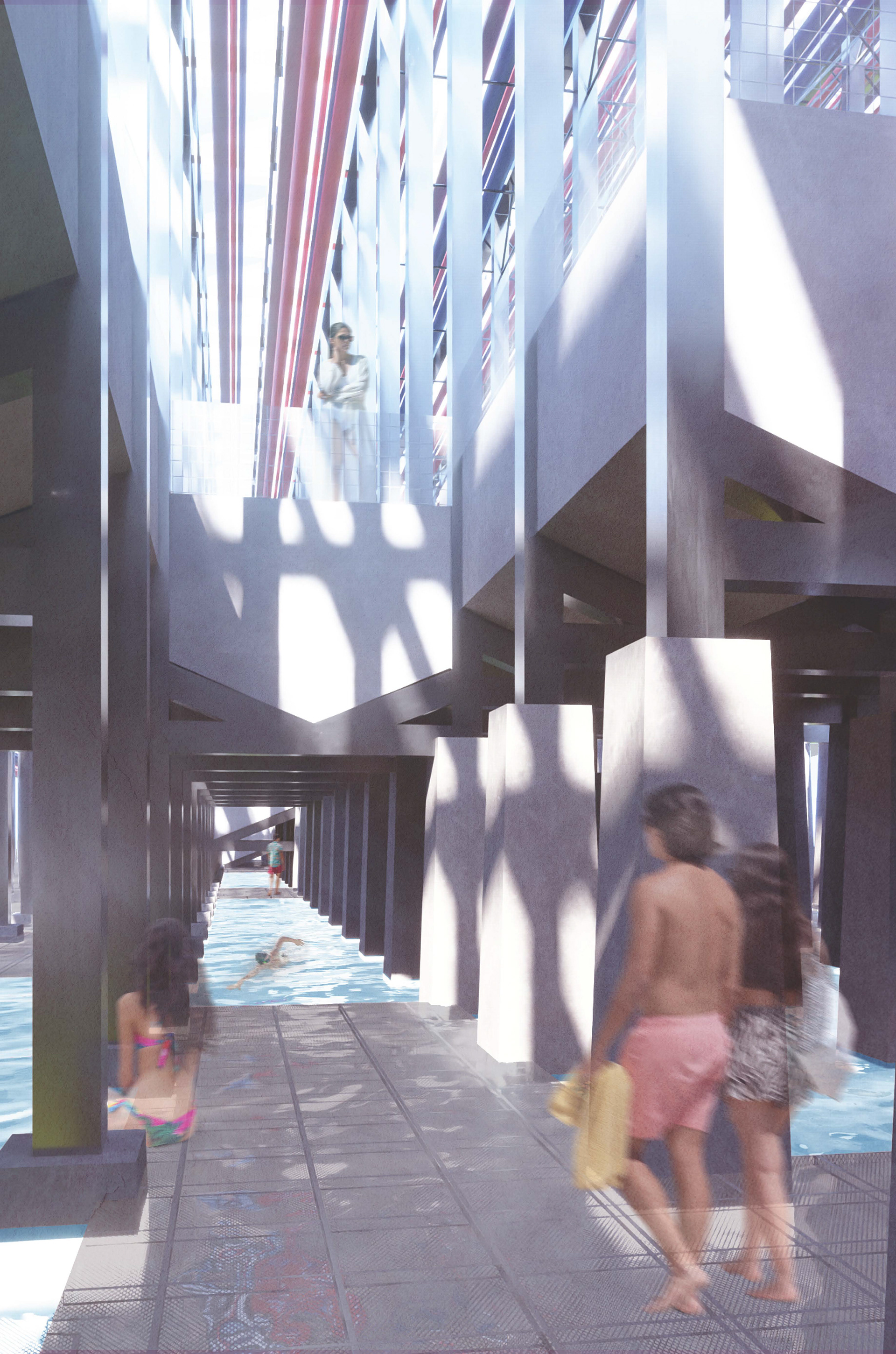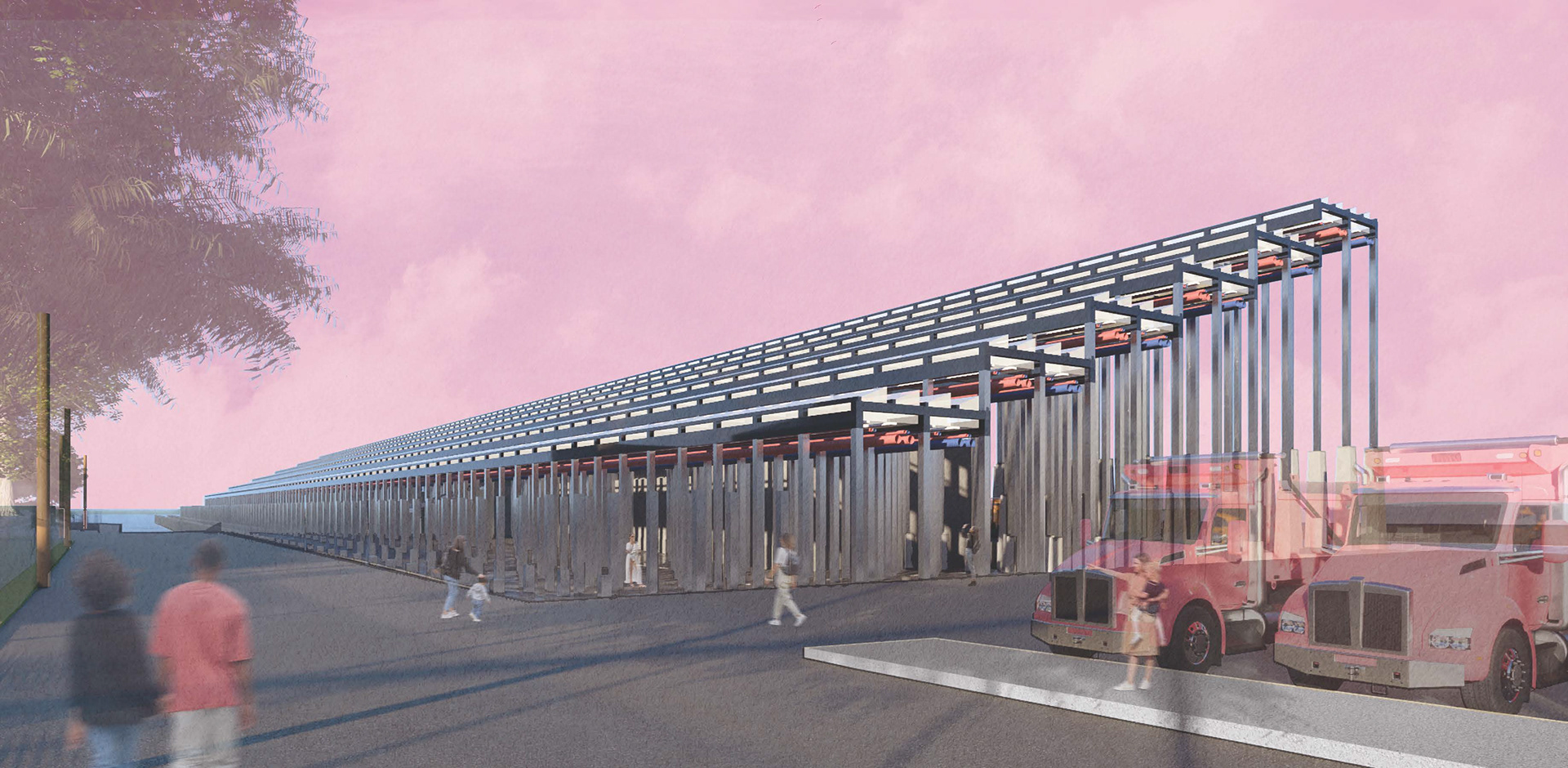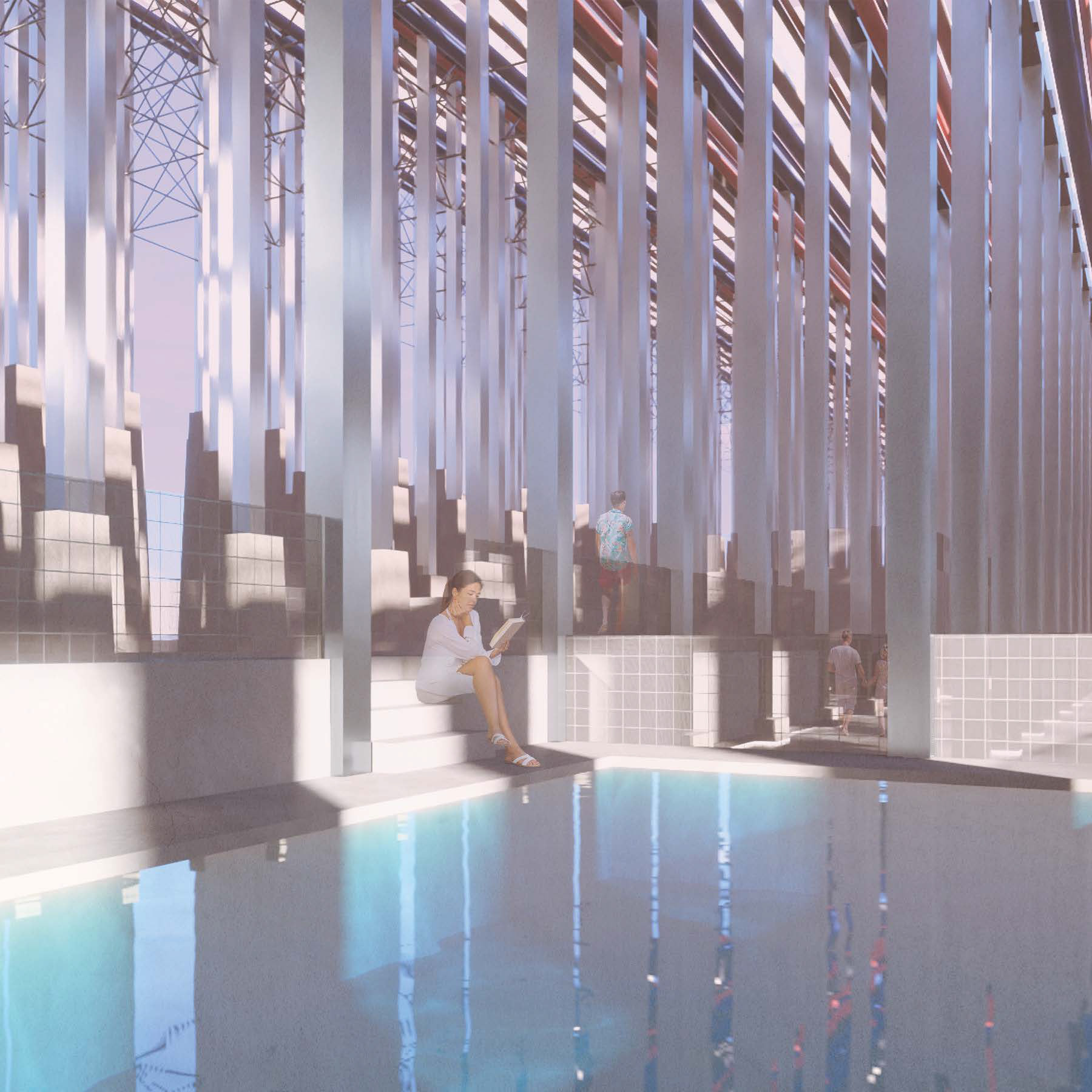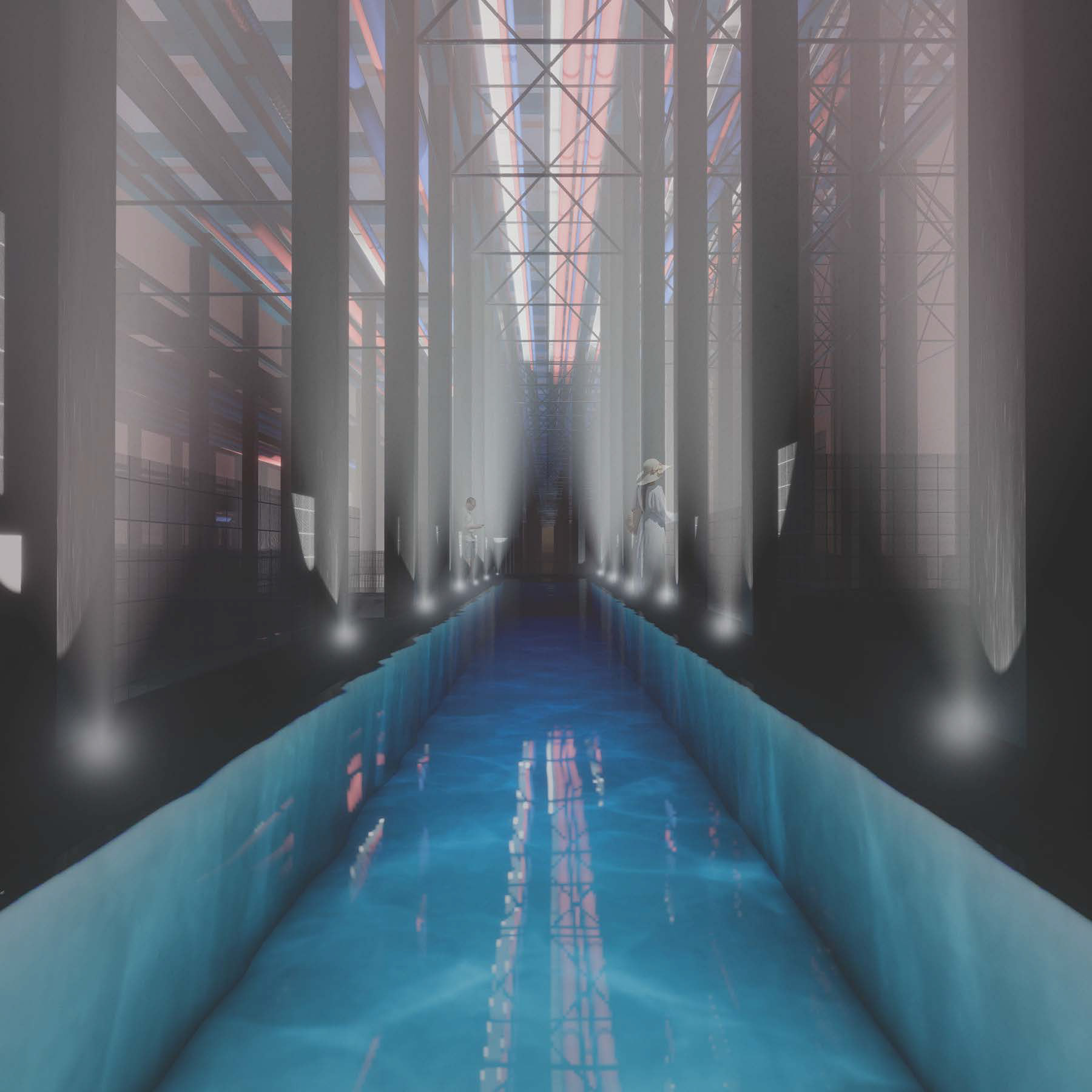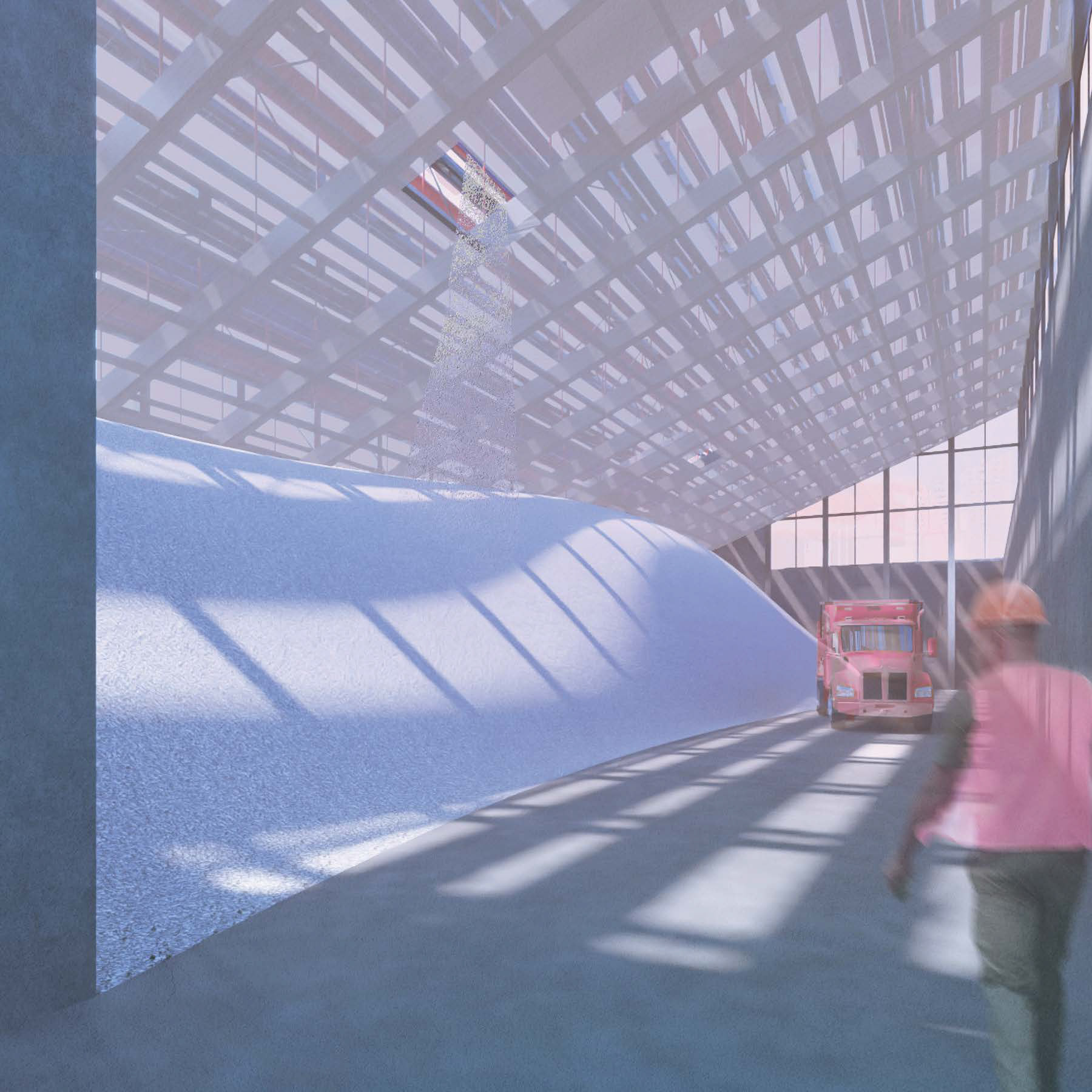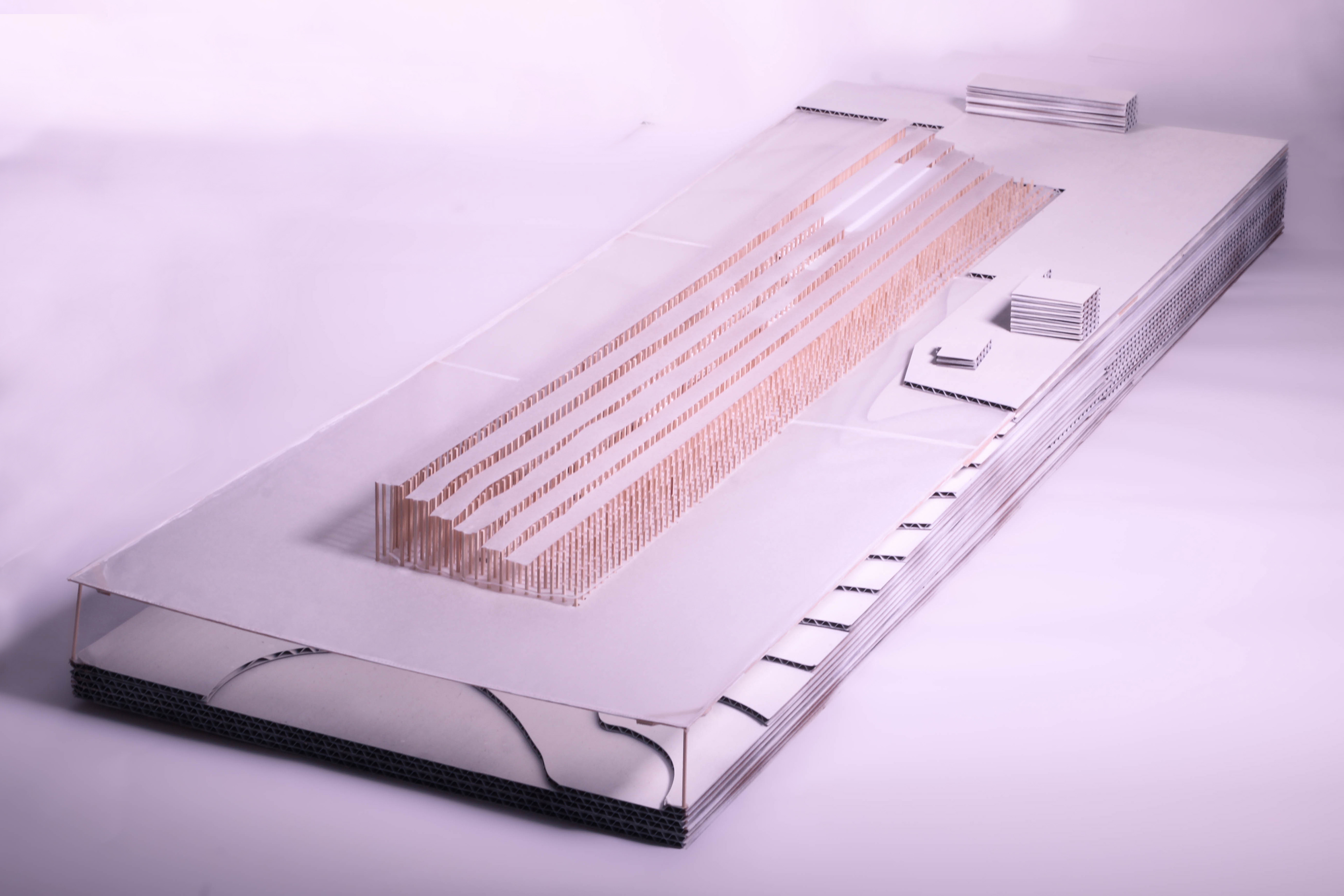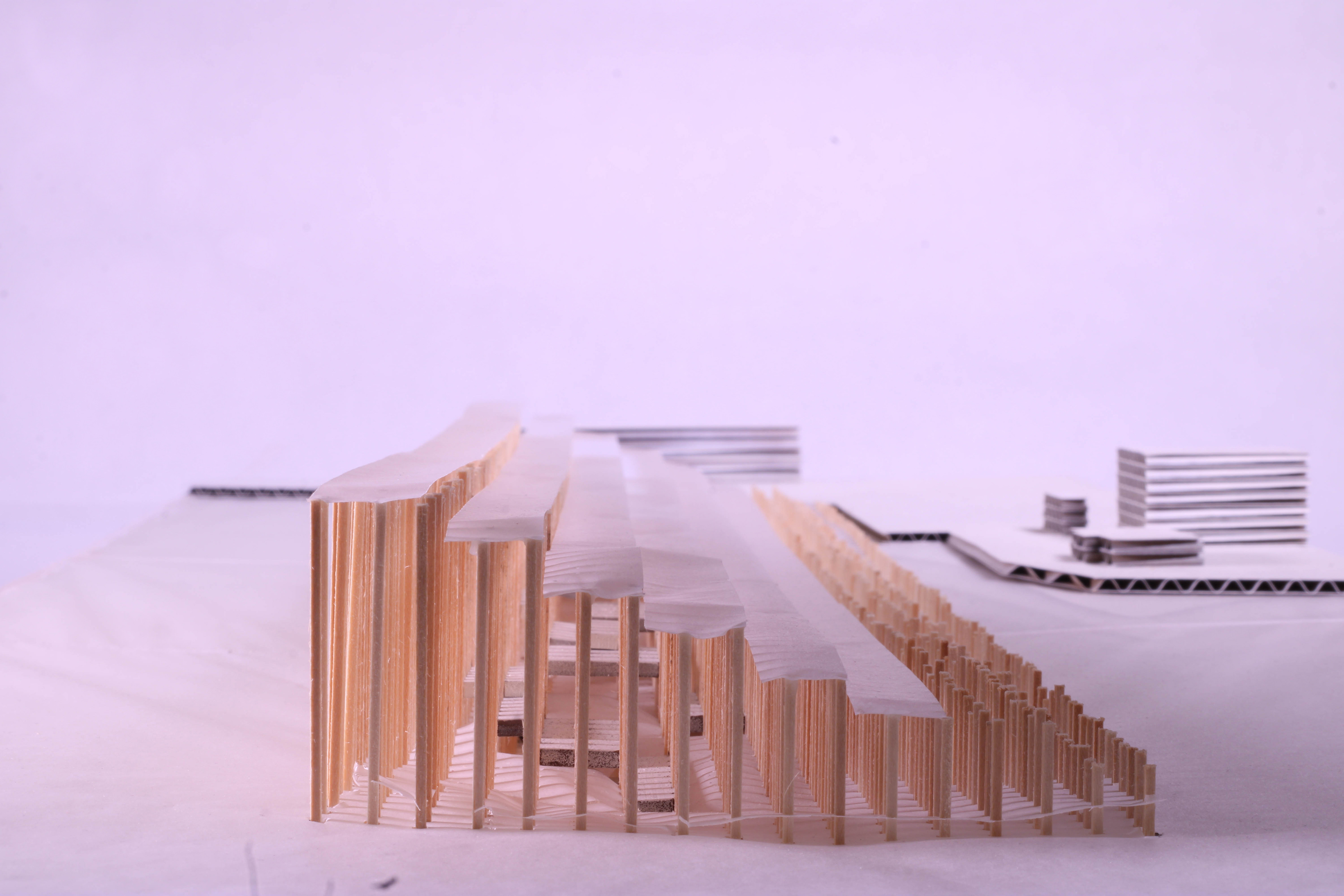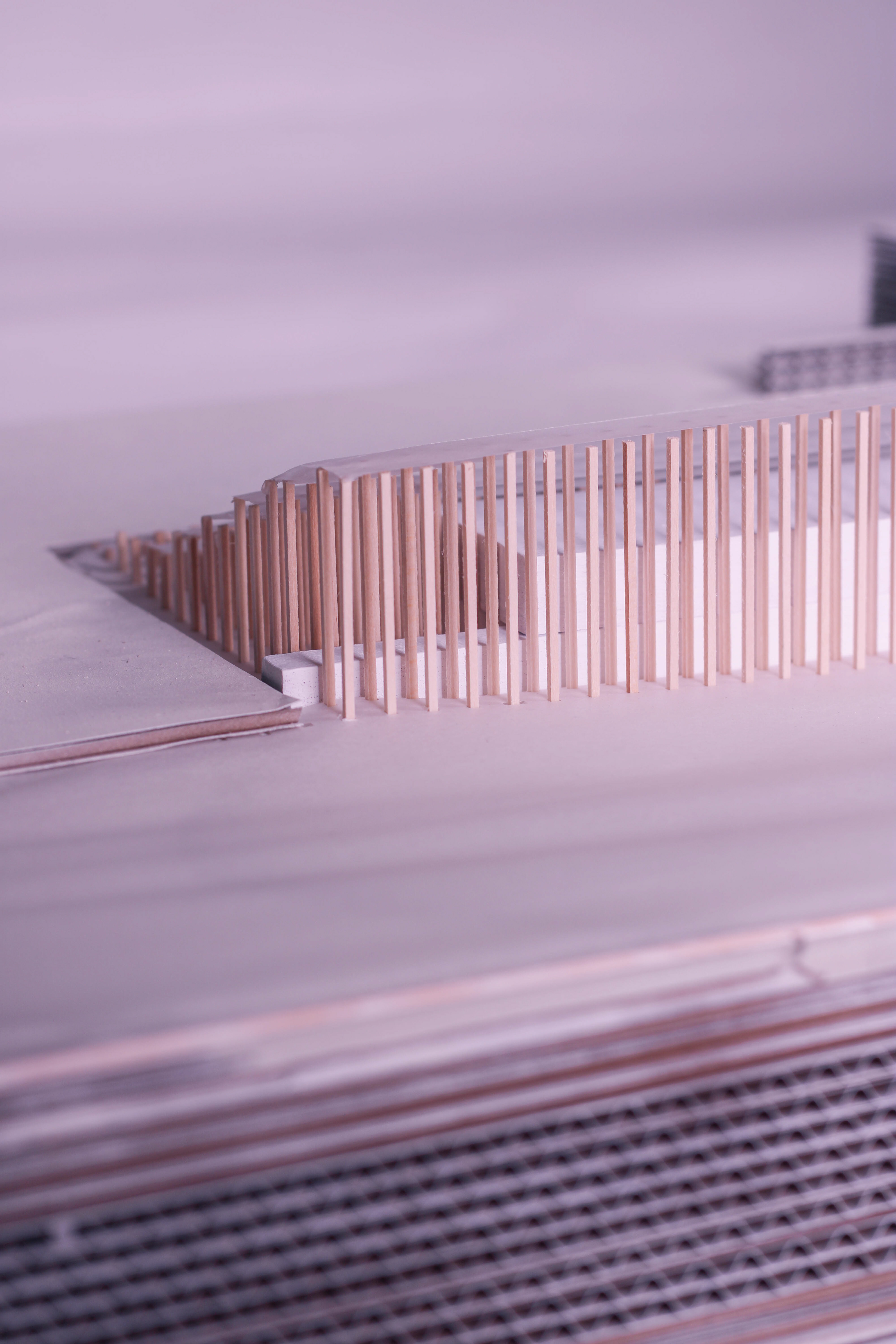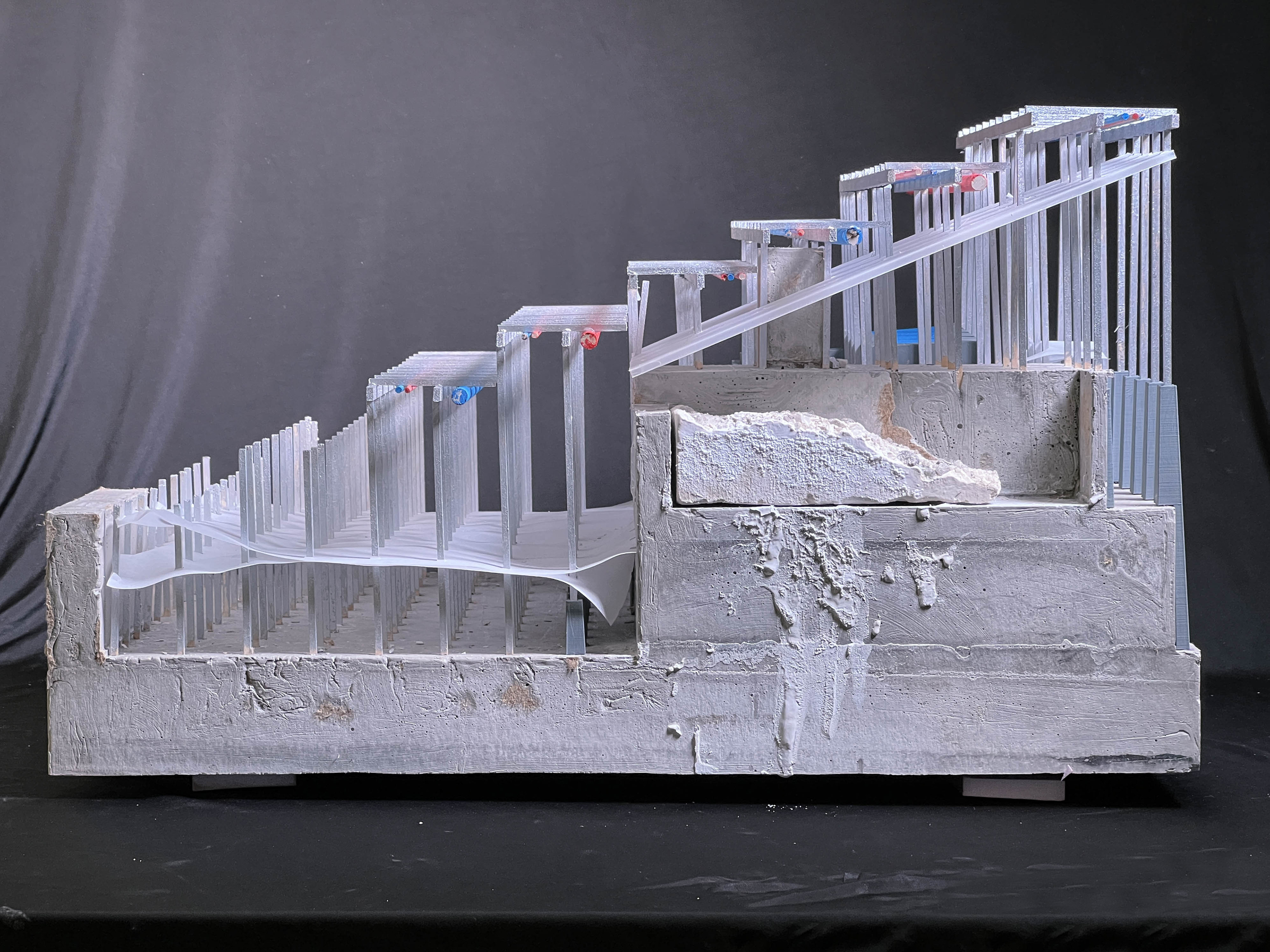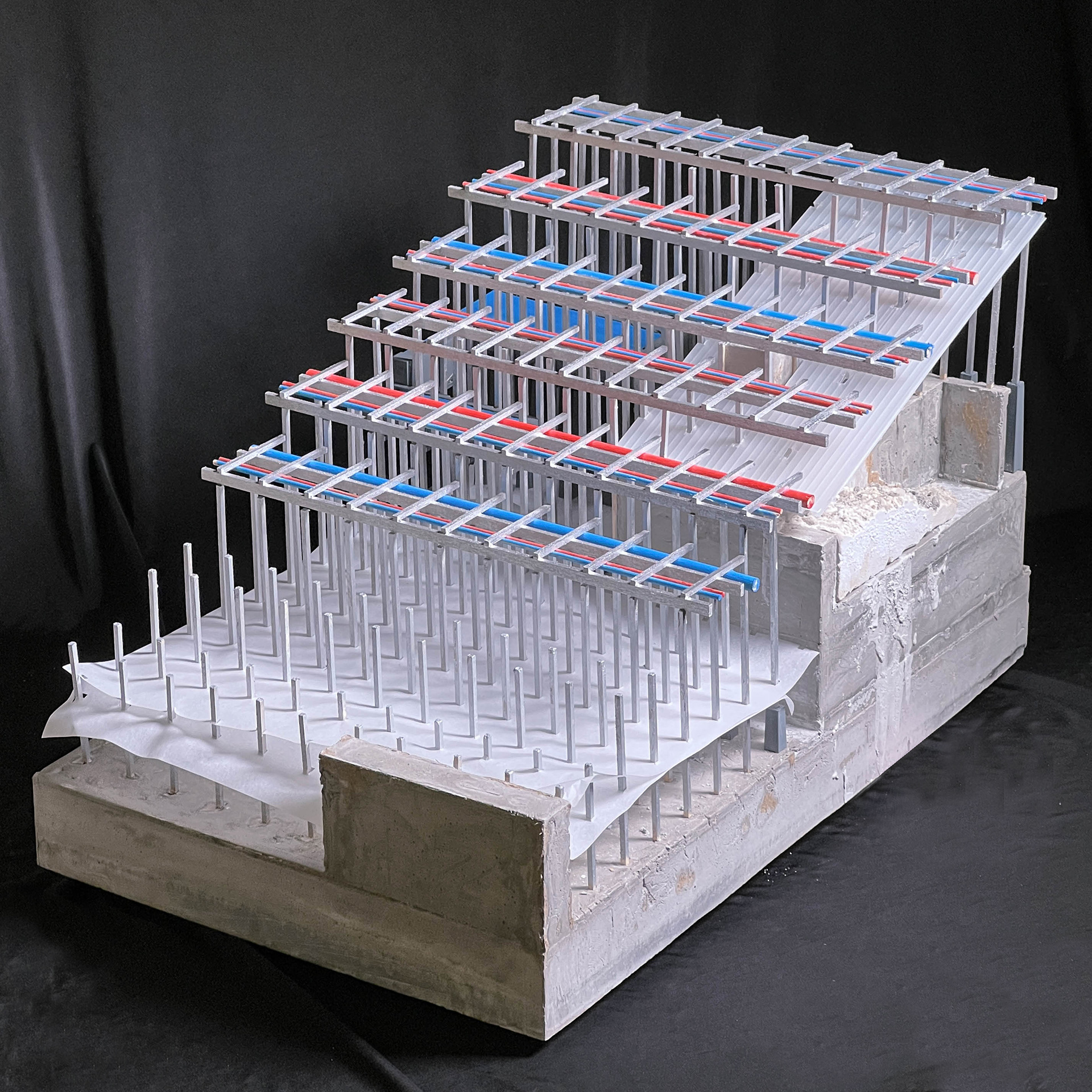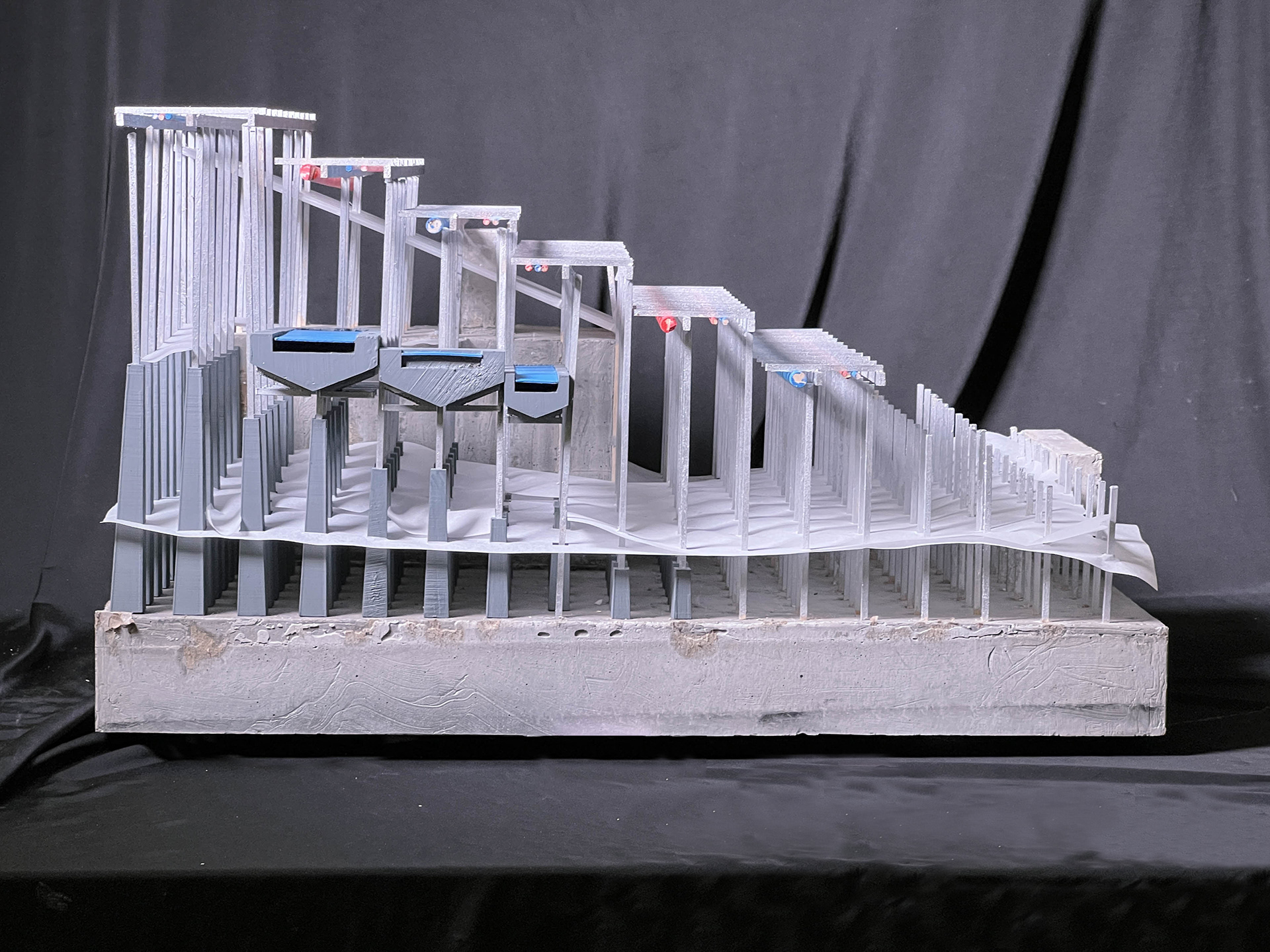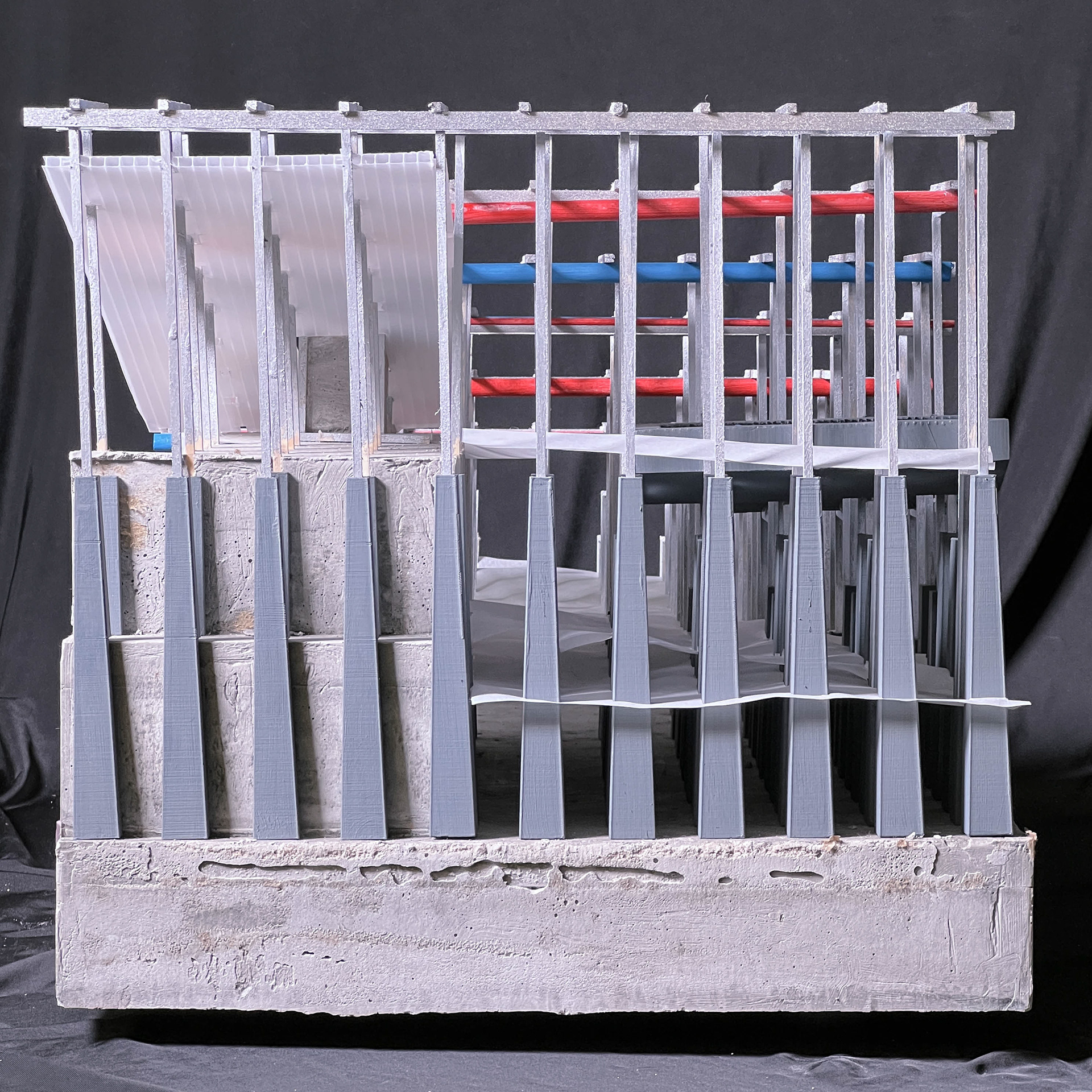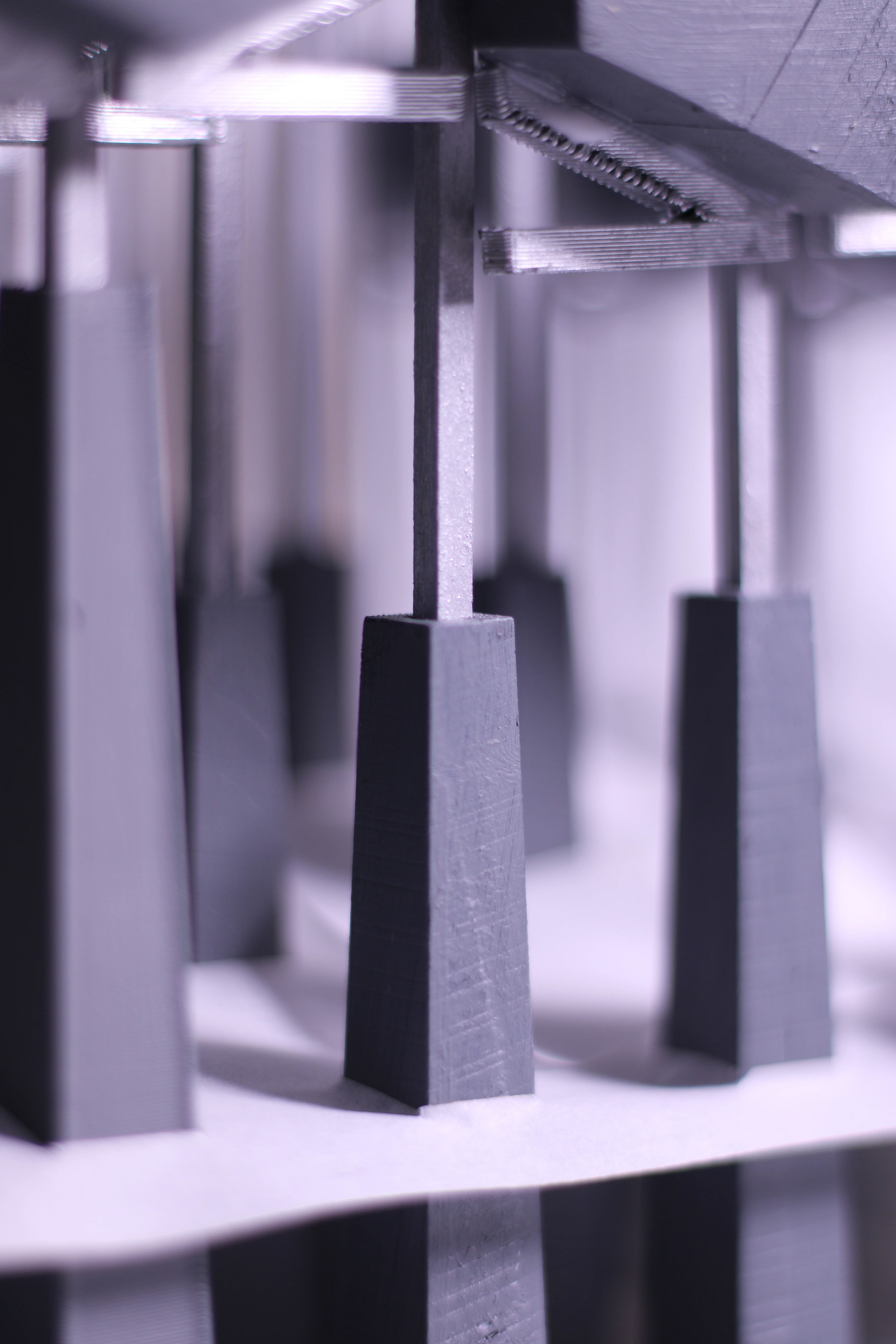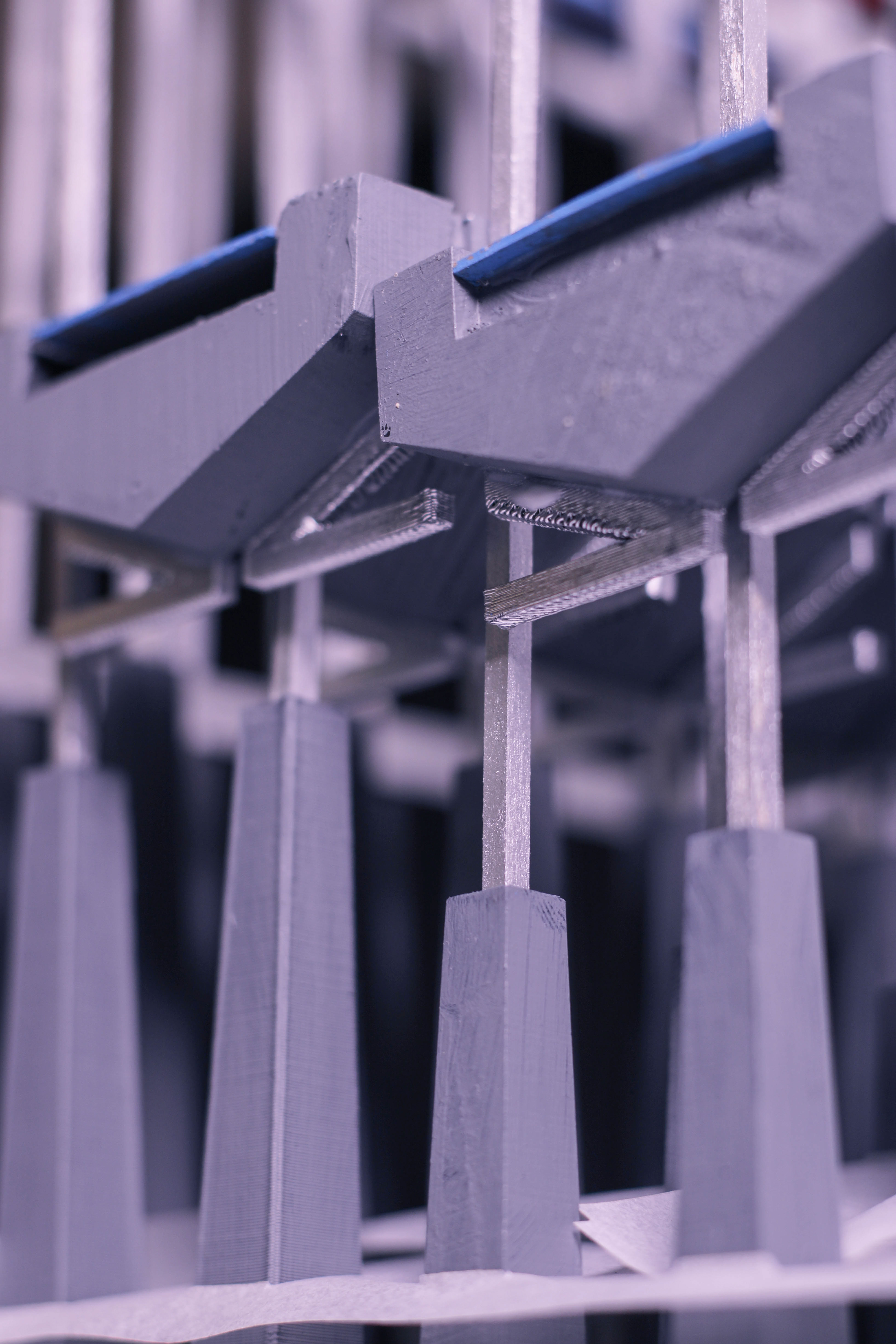Location: Brooklyn, NY
Instructor: Marie Stargala, ARC 208
Date: Spring 2023
Delaminating Waters is a projective proposal for a salt shed and bath complex in Brooklyn New York. Reacting to new desalination technologies and cleaner New York waters, this proposal projects a future in which salt shed infrastructure becomes decentralized, allowing for renewed community engagement with its processes and the waters it concerns.
Inspired by historical methodologies of solar salt production, Delaminating Waters lifts the salt flats from the water, using raised desalination units to provide enclosure and massing. These units effectively split the water into its component parts, providing salt for NYC and hot water for public baths. Free from the constraints of salt production, the water becomes a walkable landscape through the use of a semi-buoyant surface. Throughout each day and month this landscape shifts, morphs, and changes, responding to the environment and linking the user to the water. This fabric of the water is then lifted to form walkways and areas are scooped out of the ocean to become baths. From hot to cold, desalinated to salty, high to low, these baths aggregate into the ocean, ultimately integrating with the very waters that they came from. Below these baths is a didactic experience in which the viewer can see and understand the many ways in which the water is seen and experienced. They stand on the very surface of the water, subject to its every change and shift. They look down at holes in the fabric of the water, marking locations where that water has been relocated. They look up at baths rid of their component salt. They look further at the process by which the water is separated, coming face to face with Delaminated Waters.
research:
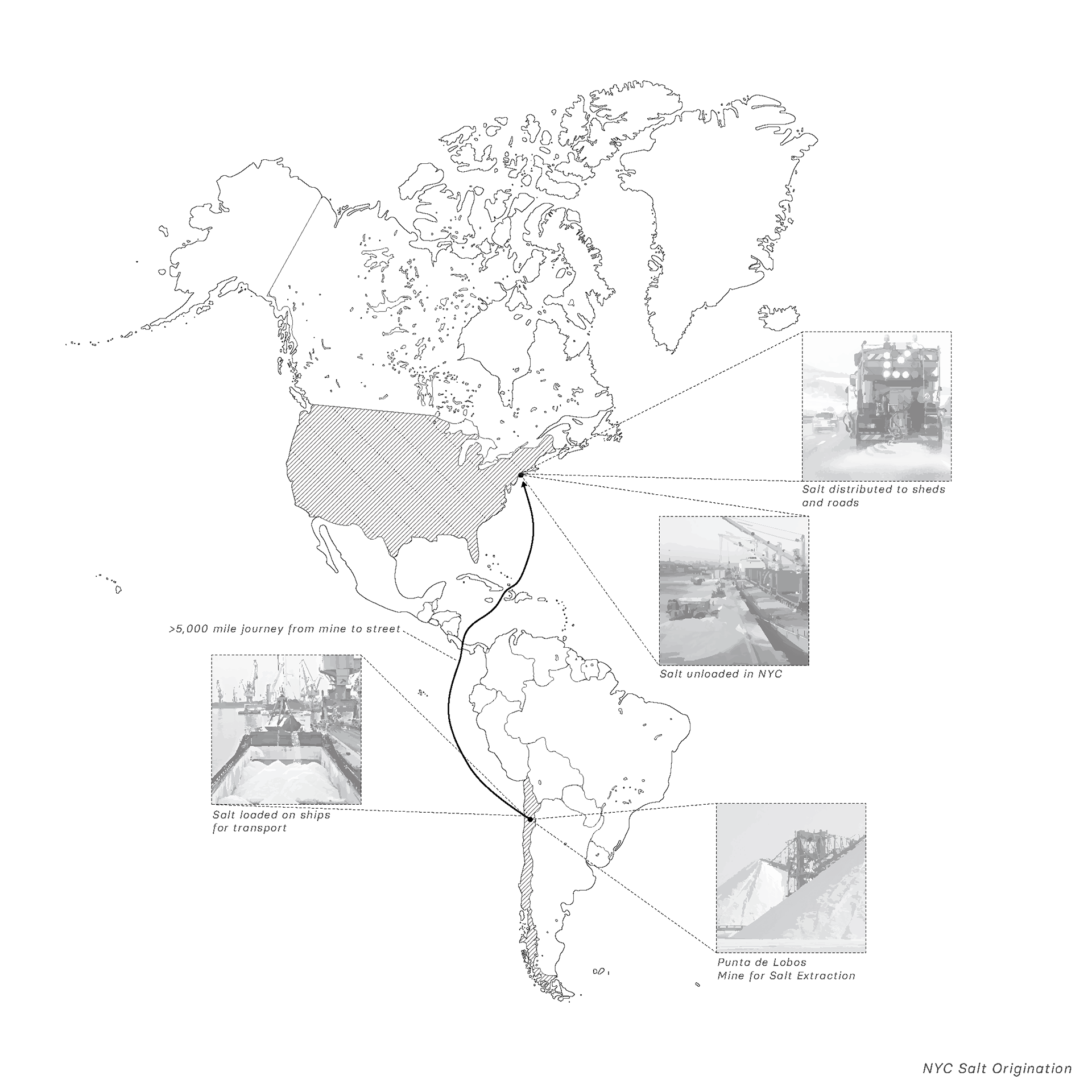
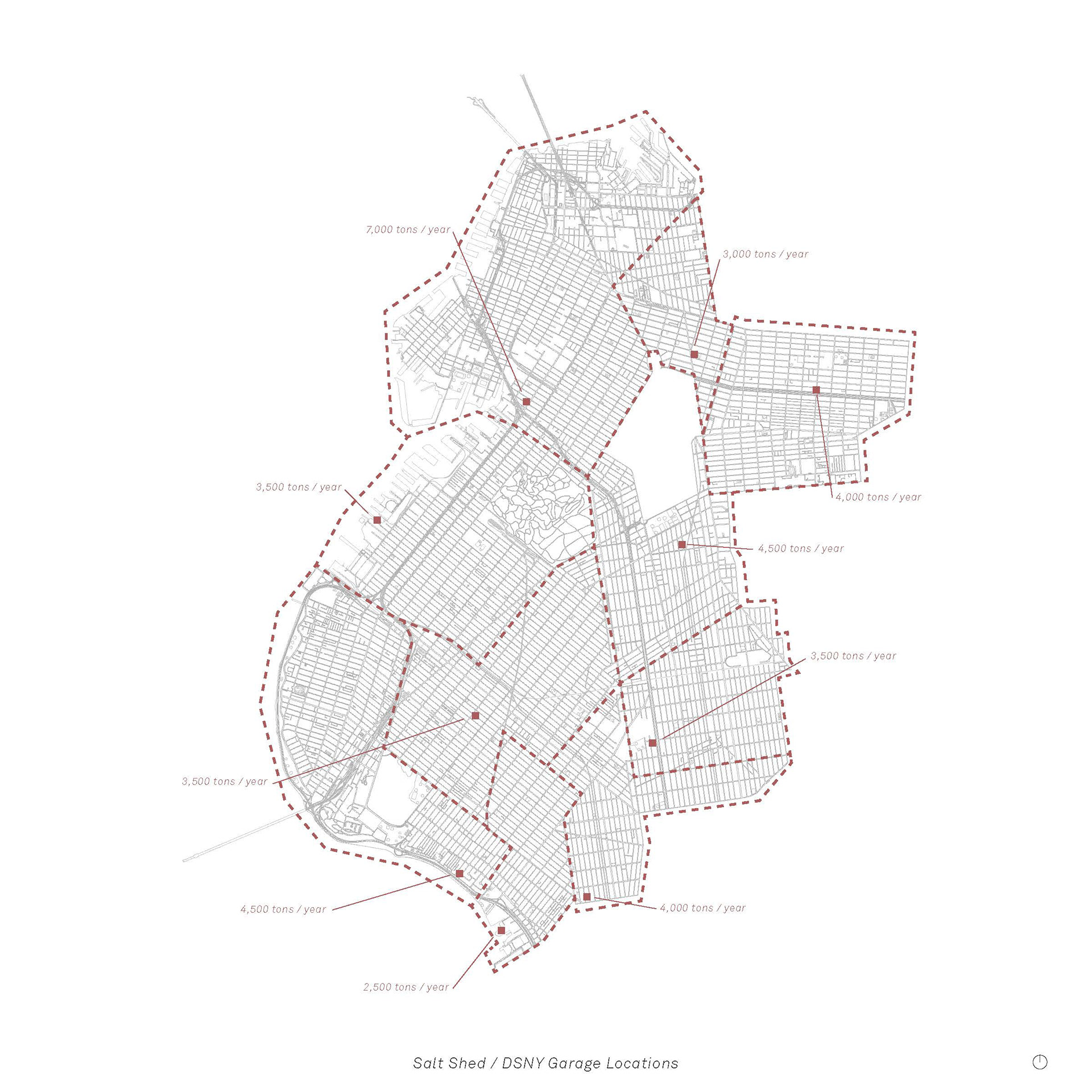
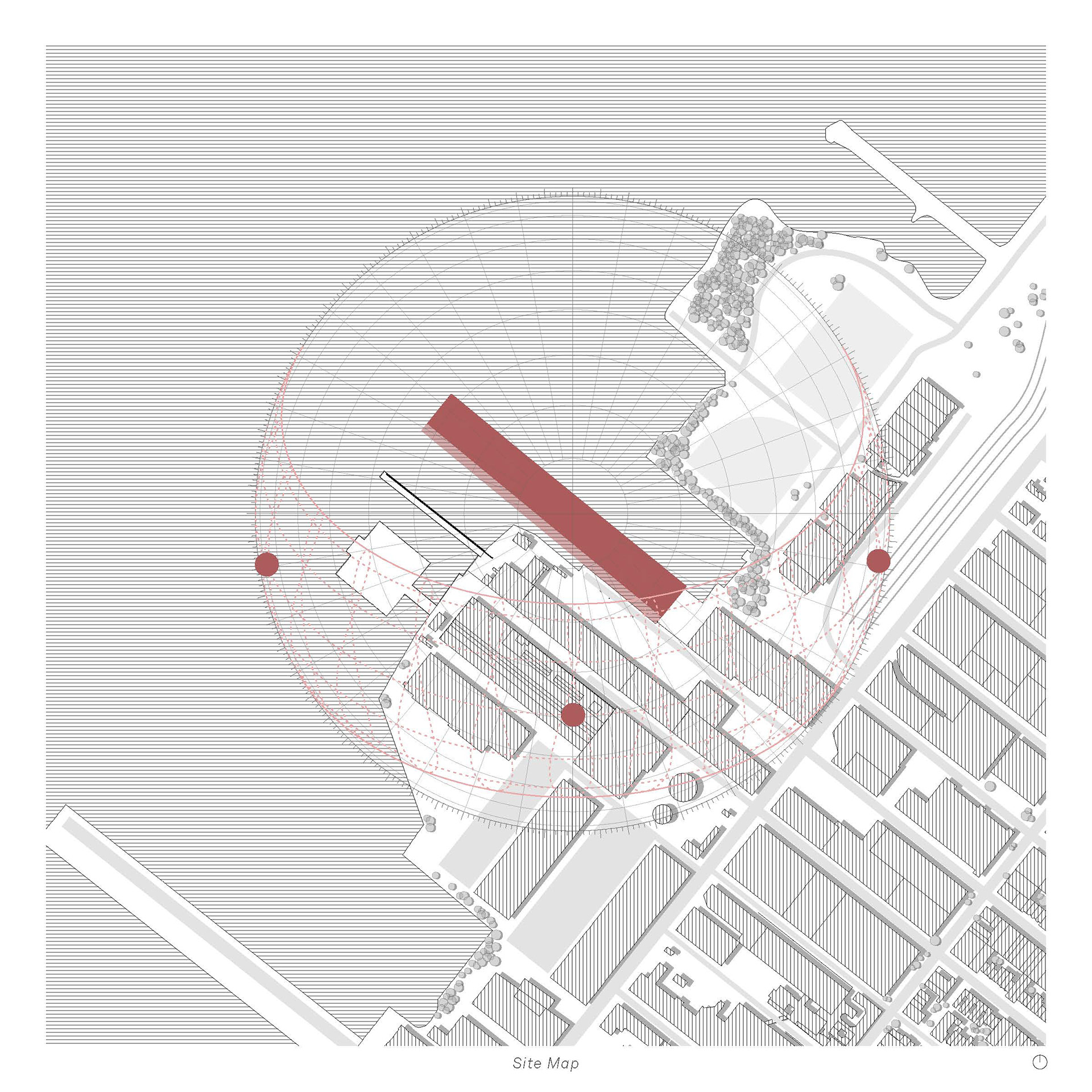
Understanding the existing means through which salt is mined, shipped, and spread across the roads of New York was the first step towards proposing a decentralized system. Shown are diagrams representing extraction and shipment on the scale of the continent (top), existing DSNY and salt shed locations within Brooklyn (middle), and the location and orientation of the site along with its sun path to better inform the massing of desalination units (bottom).
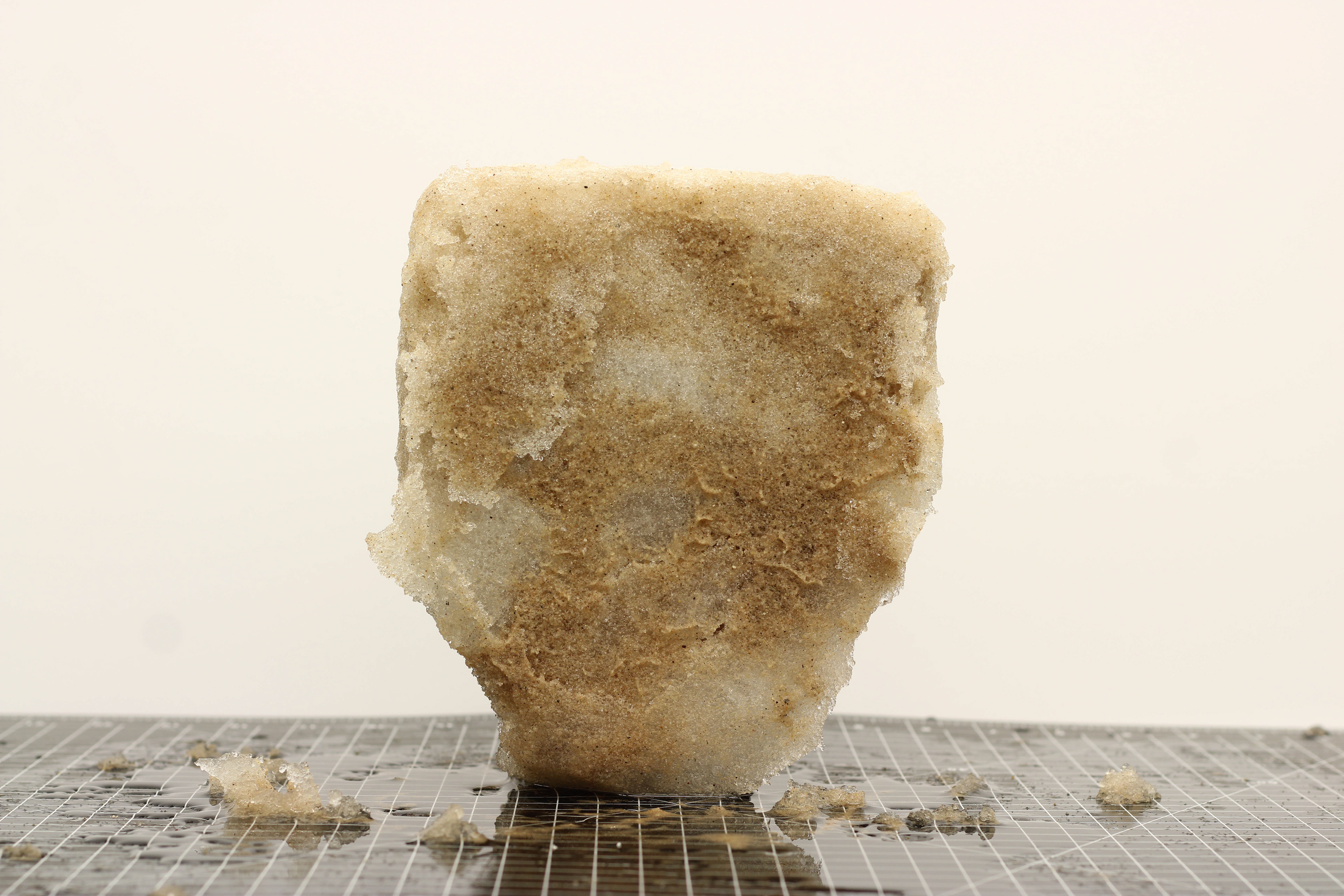
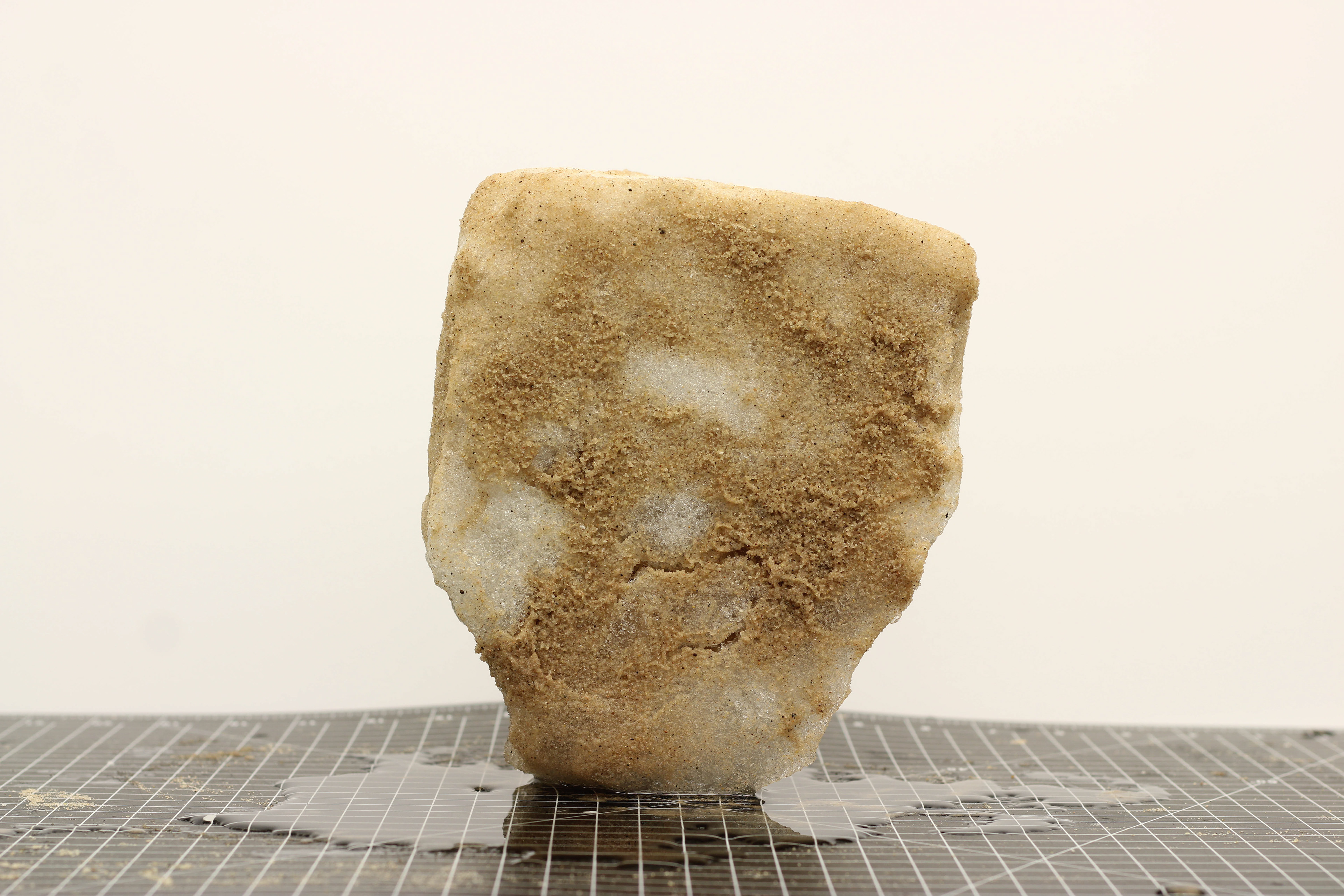
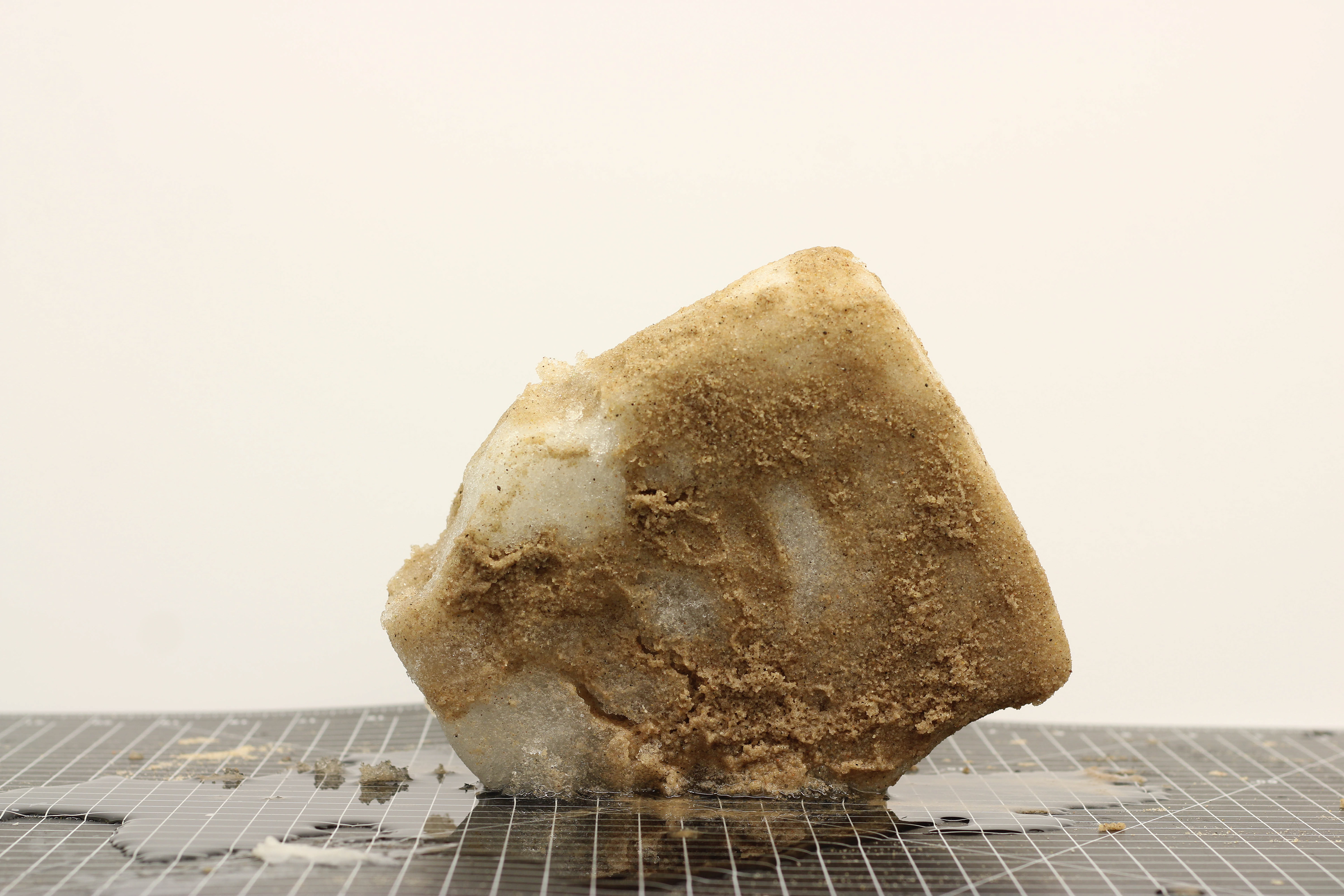
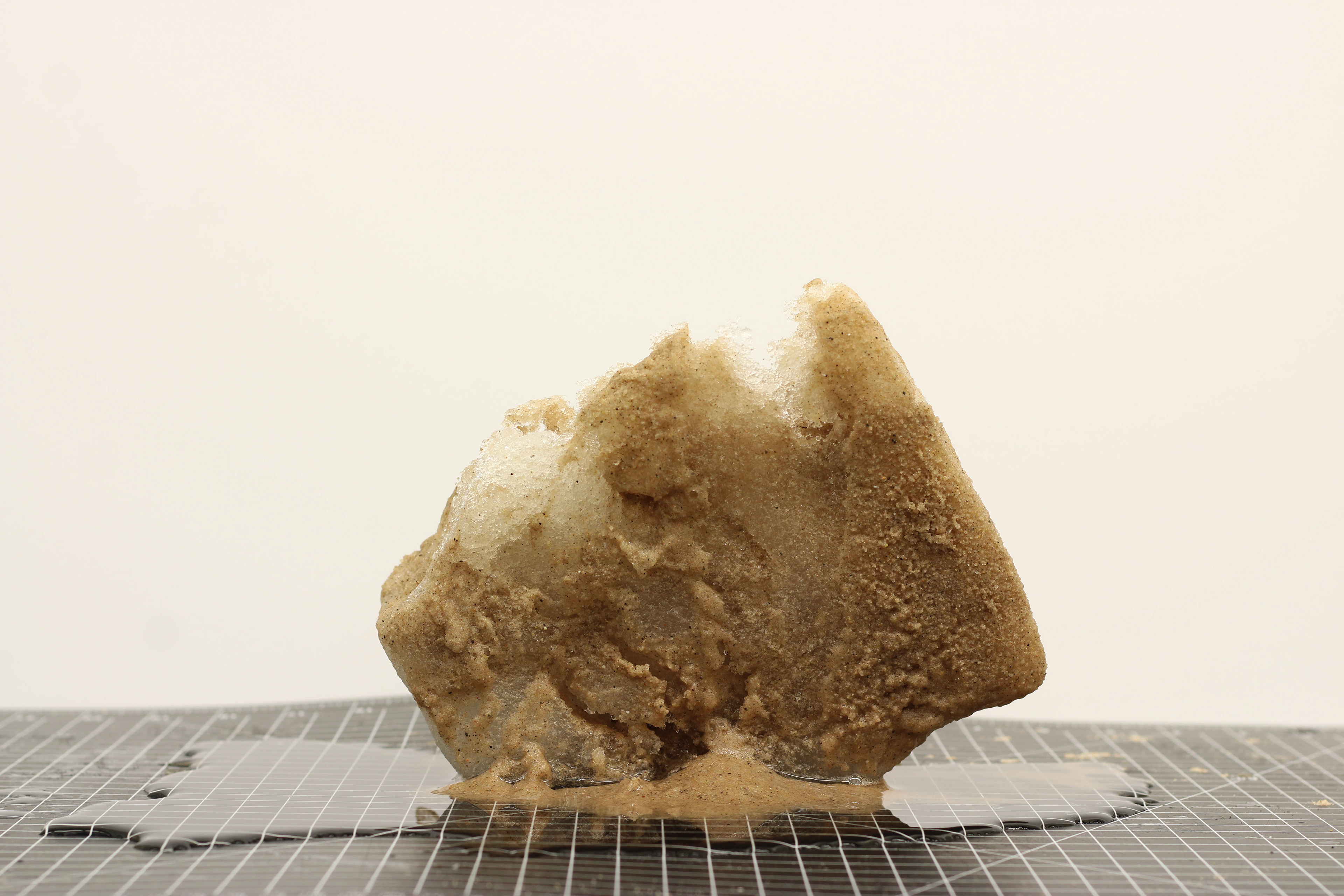
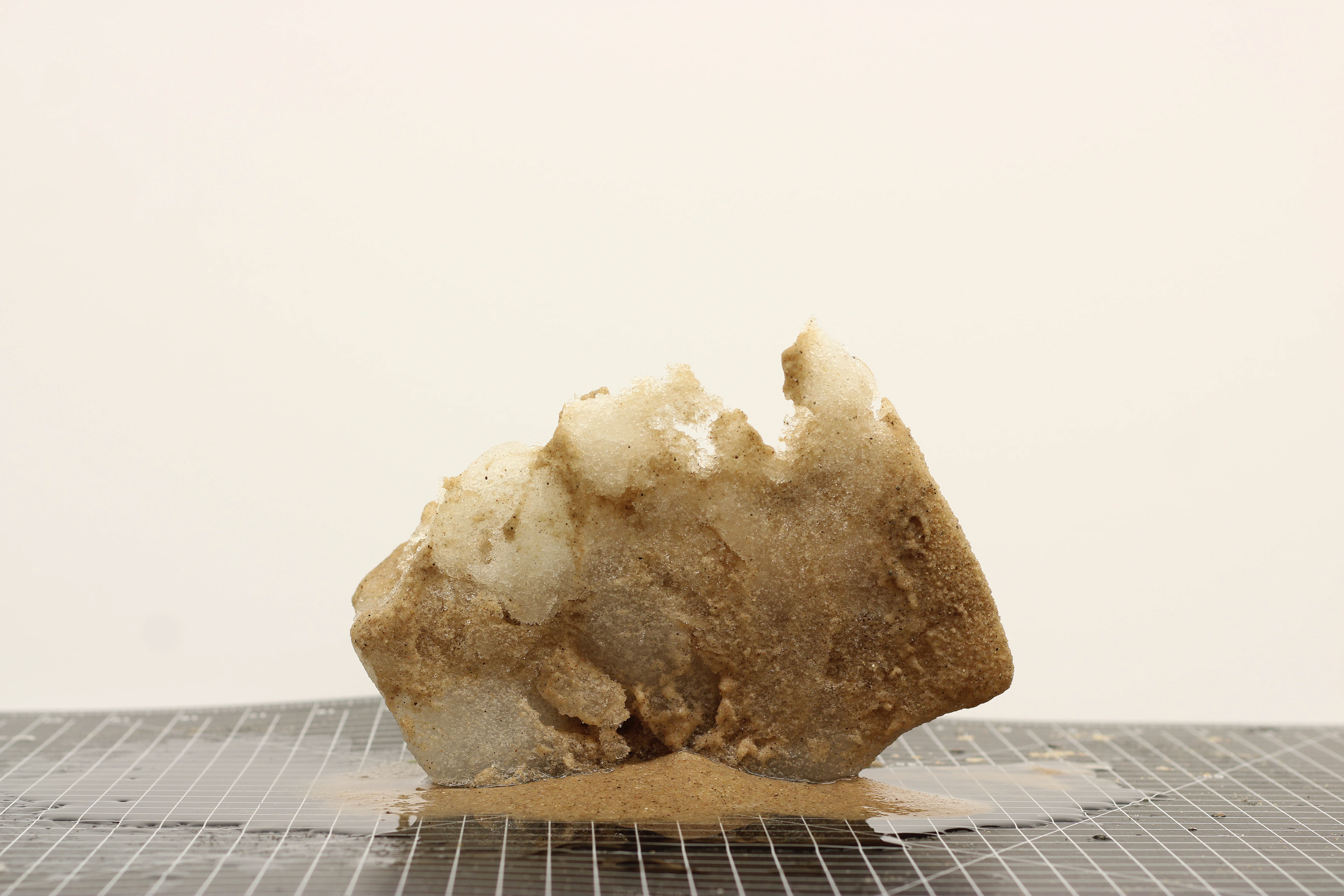
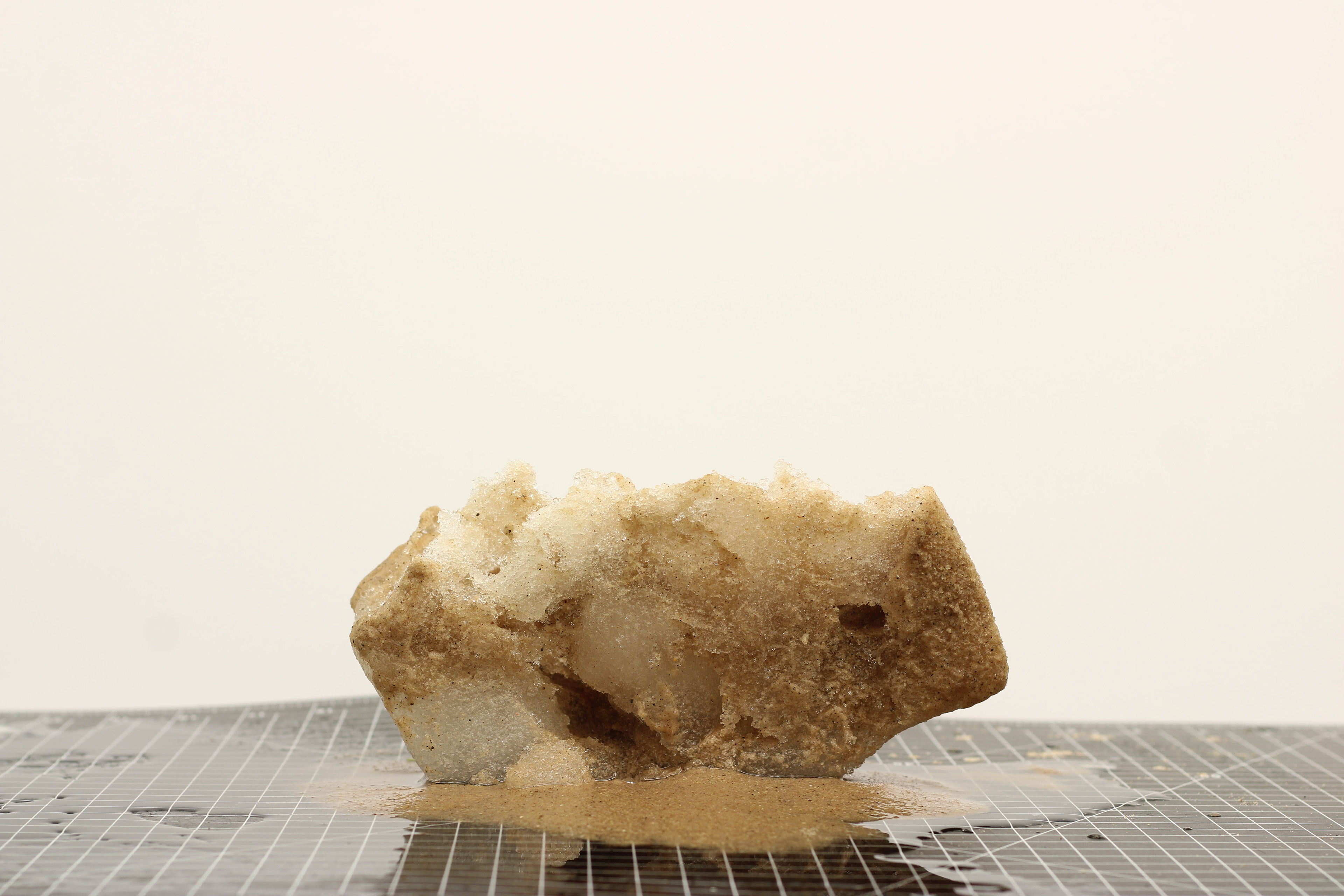
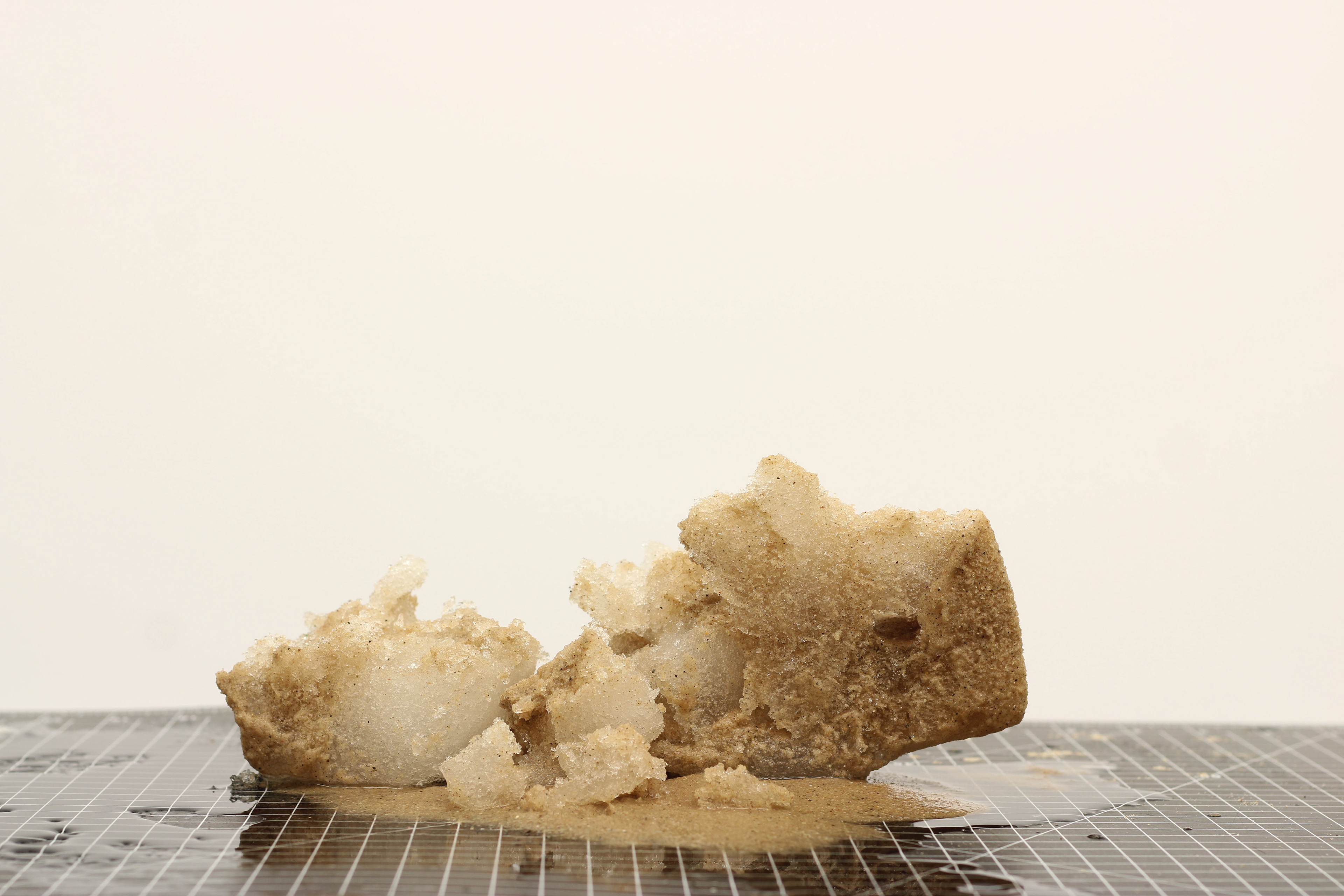
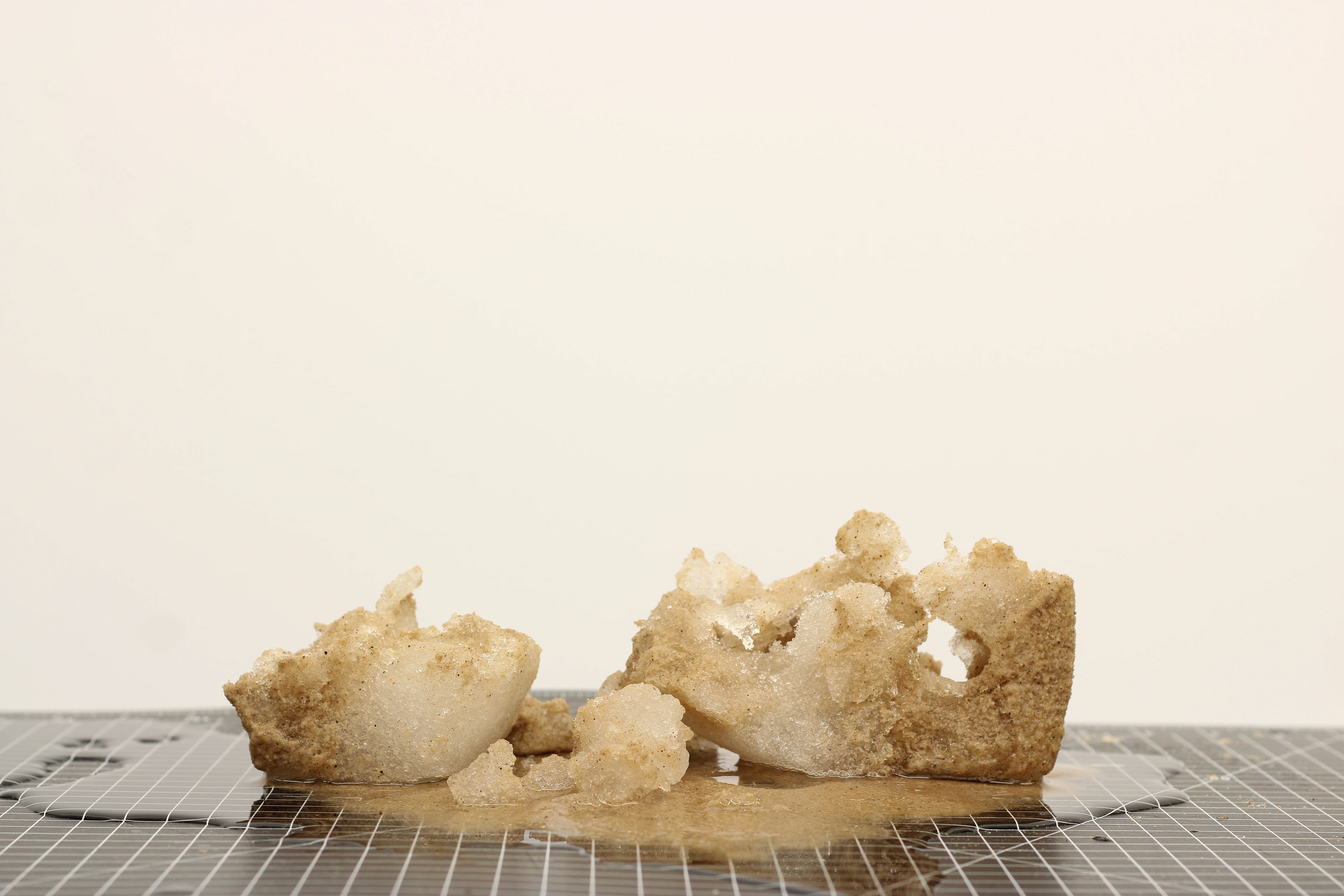
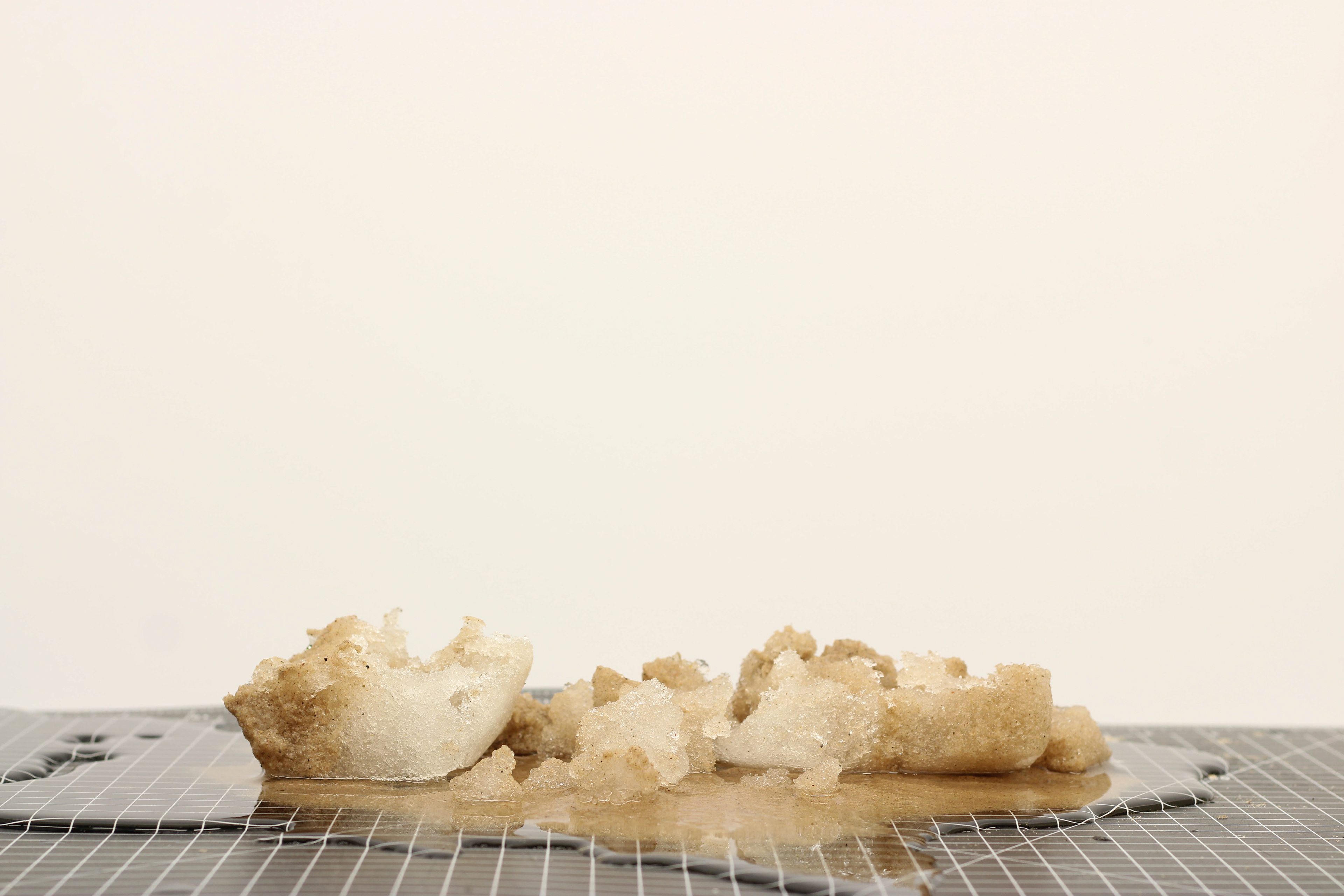
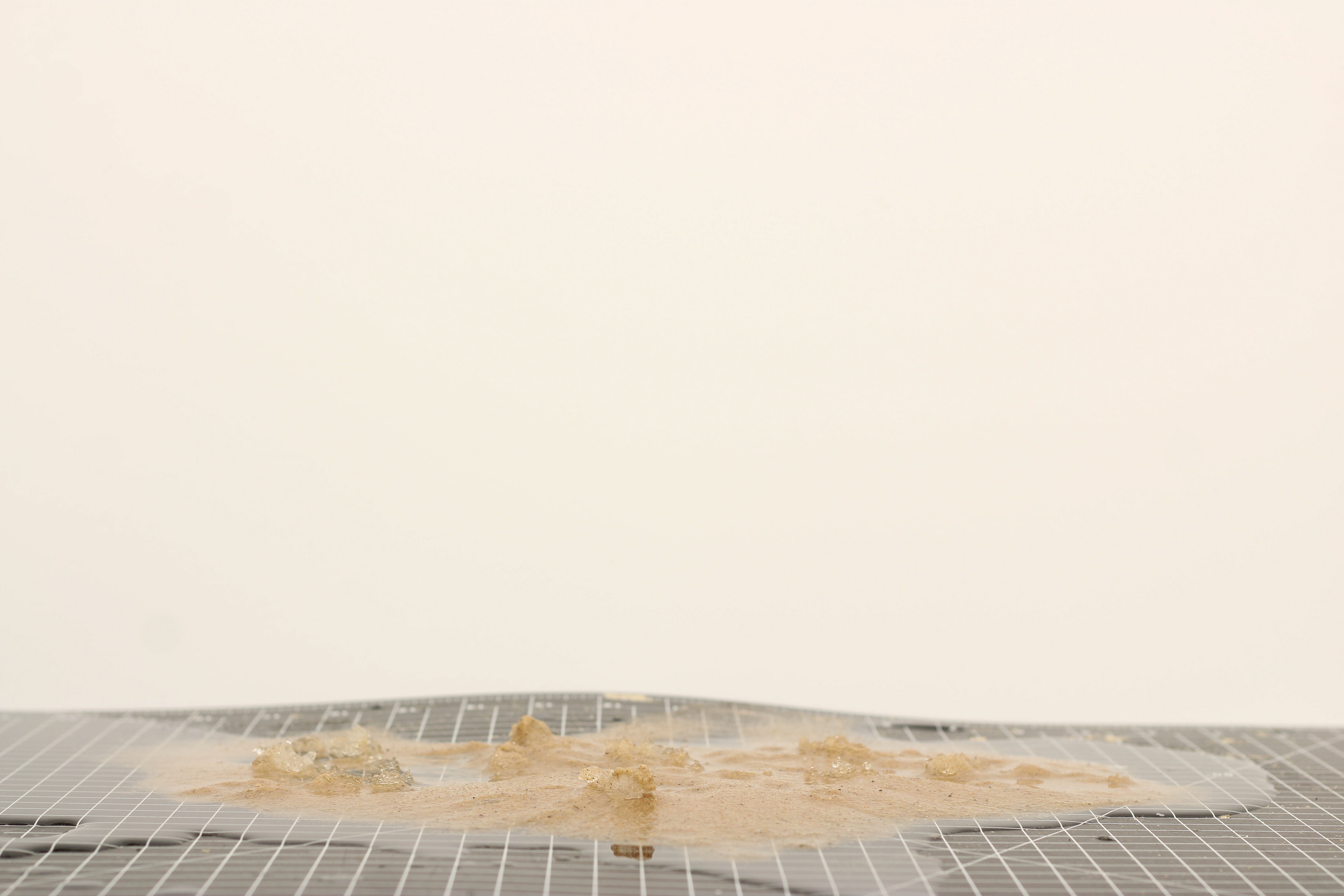
Proposing a decentralized salt shed system means considering the ways in which salt accumulation and its formal qualities change over time. In order to better understand these processes, I combined snow and sand to create a model that slowly melted over time. In documenting this process, I was able to reorganize the slow melting process to better represent the ways in which the salt piles would change throughout the year.


Salt changes, morphs, and eventually destroys everything it touches. In a world that values the rigid and unchanging, the entropic effects of salt contact and the textures they create are often unwanted additions to any built work. In an effort to better understand and design with these conditions, I ran pieces of paper on a conveyor belt under a mass of salt. Over time this paper was marked and changed by the salt, opening doors to interesting material and formal possibilities.
the speculation:
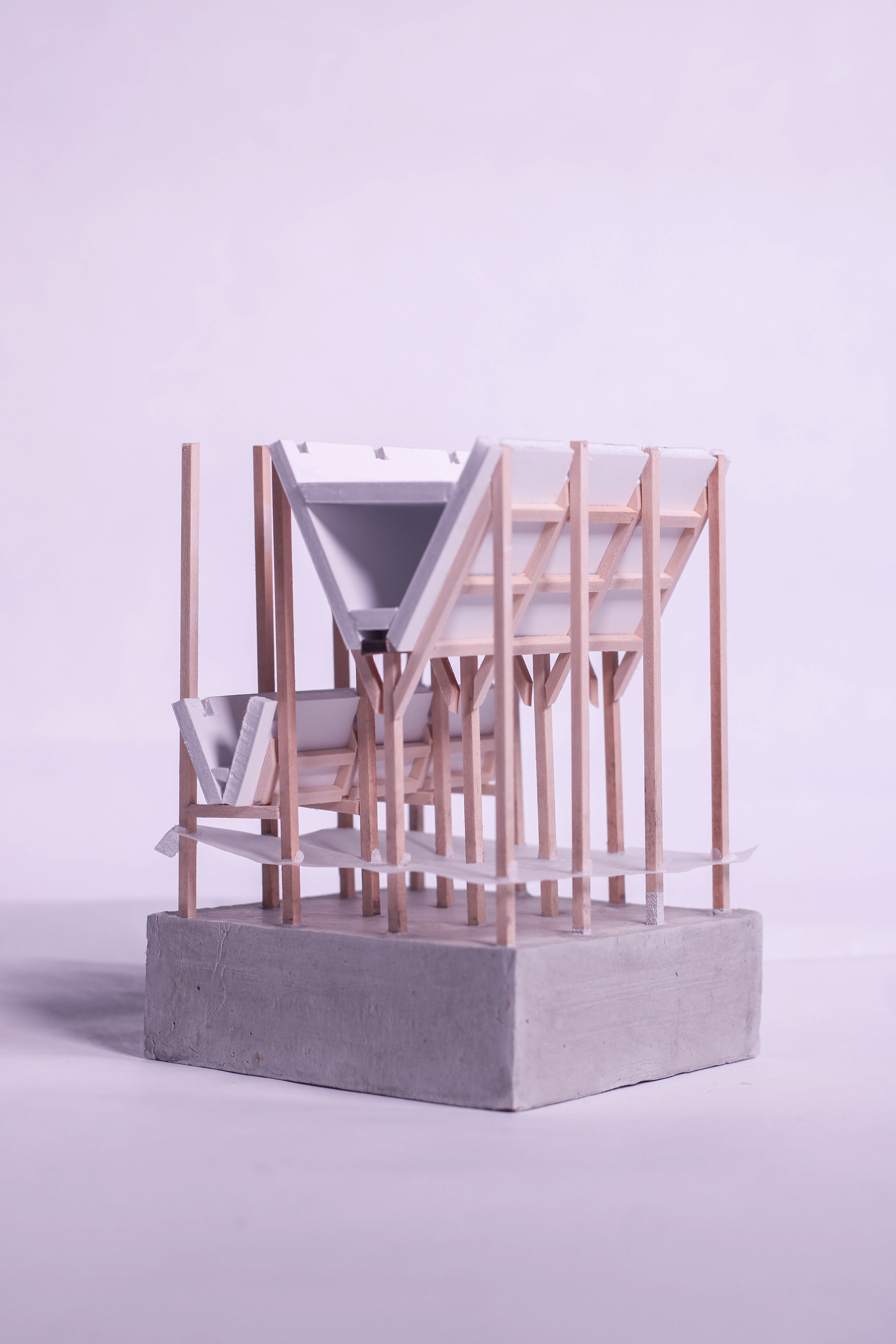
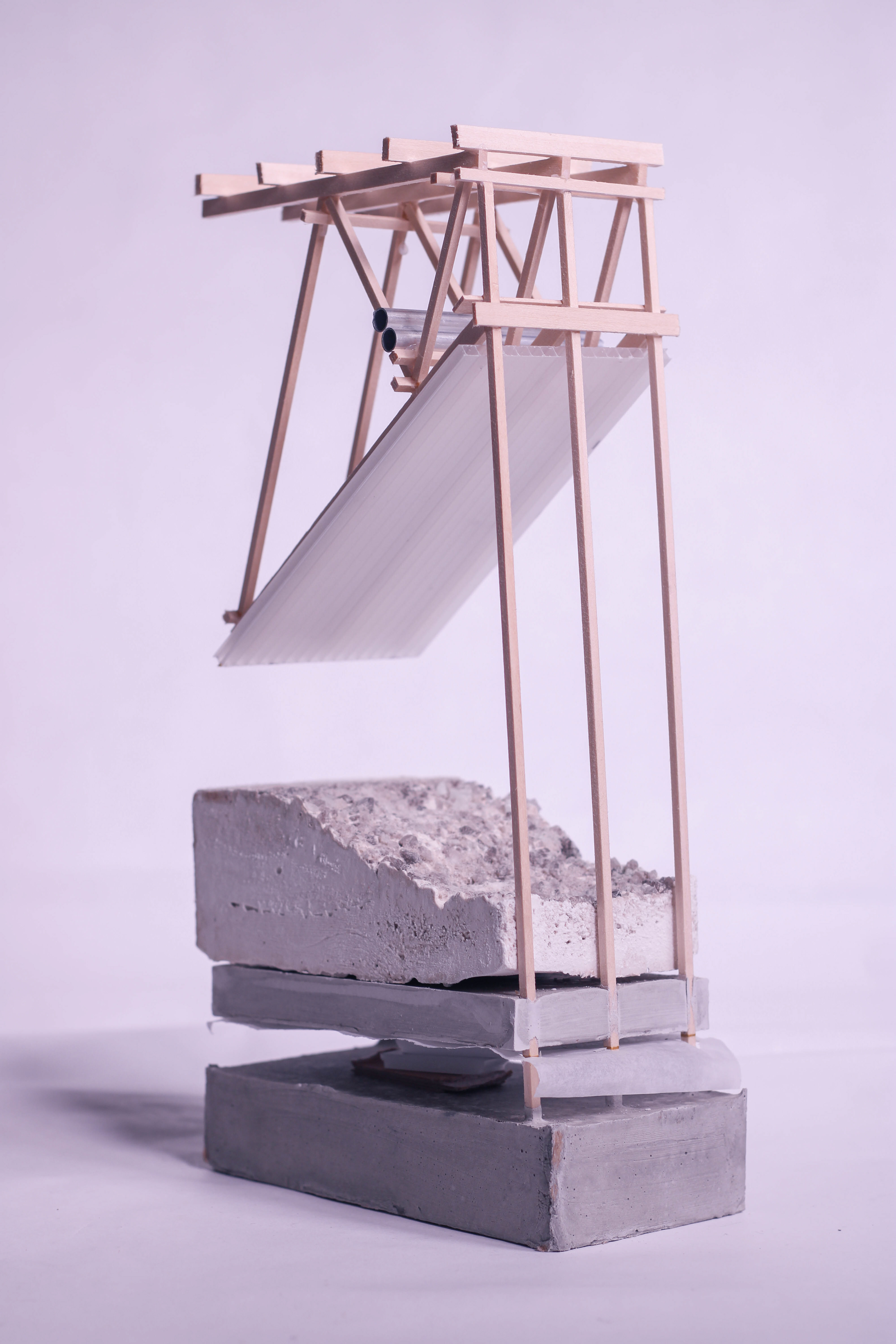
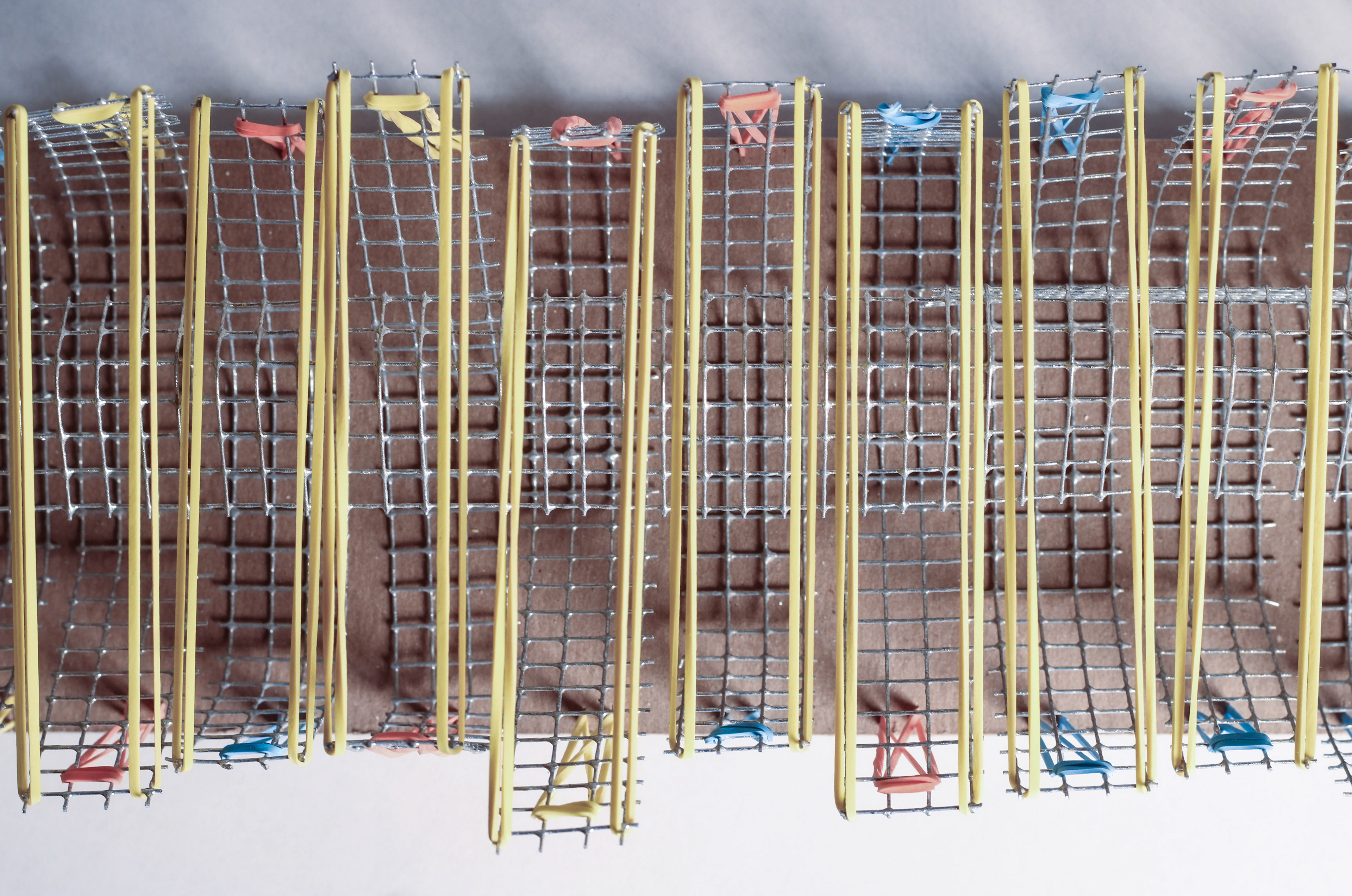
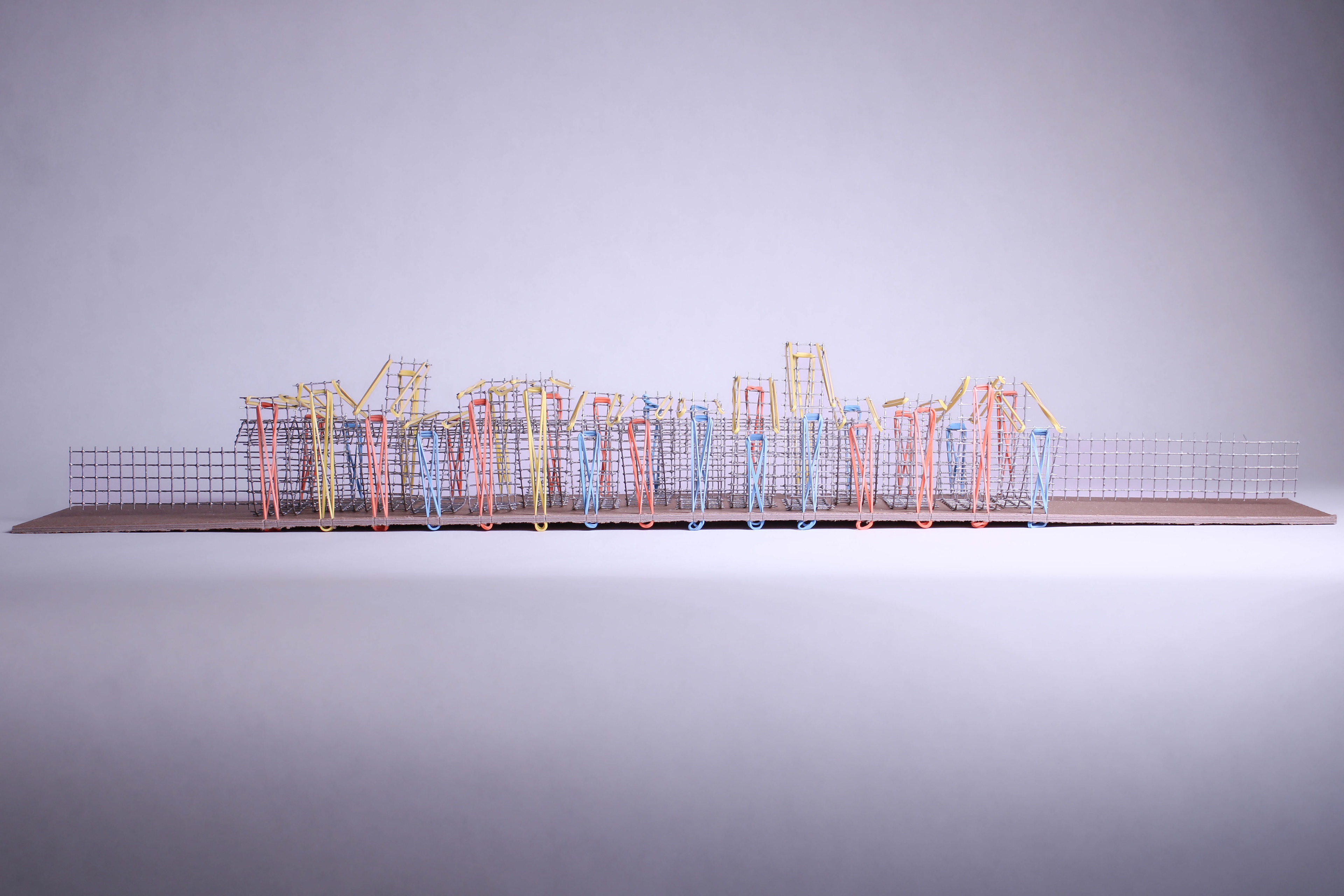
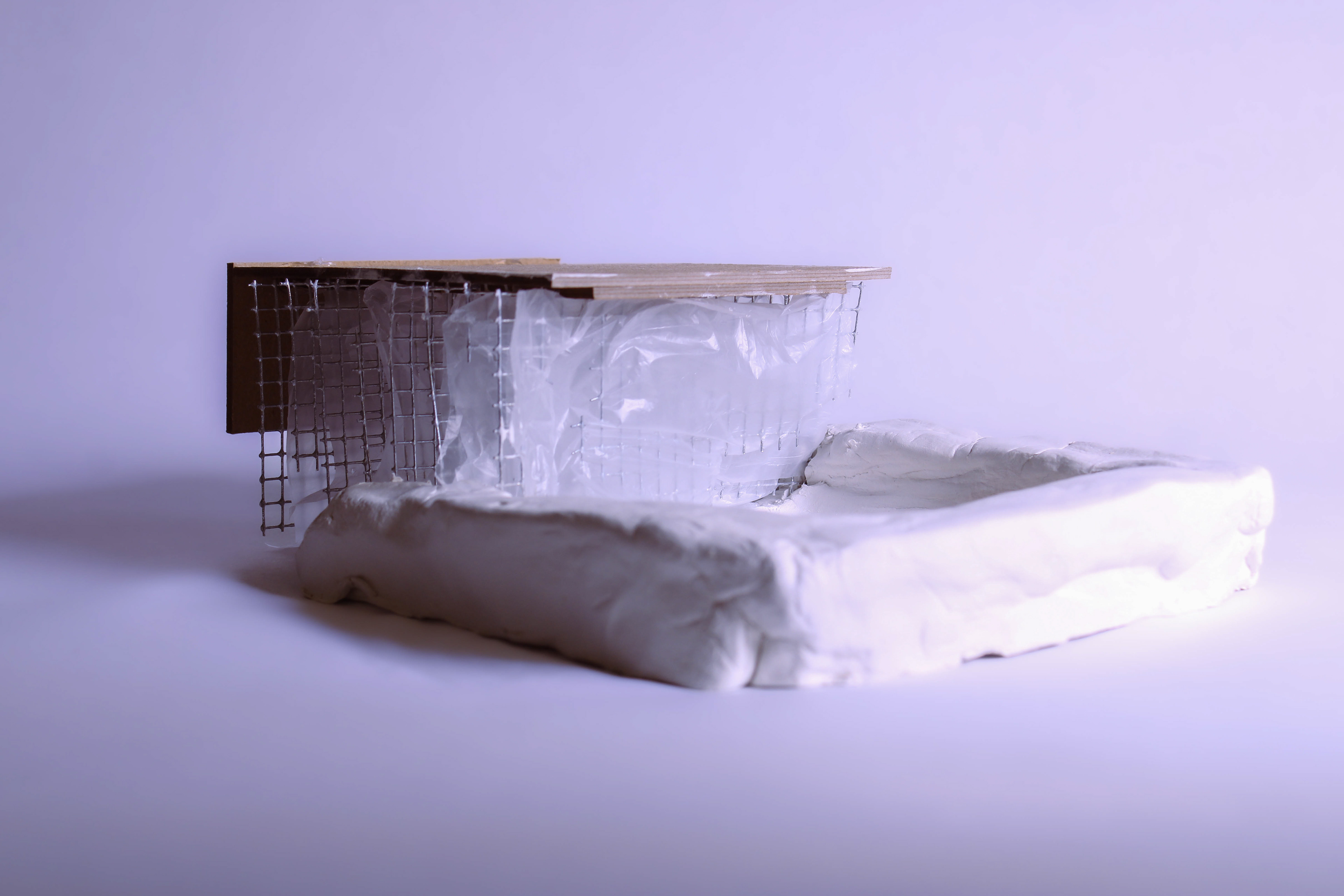
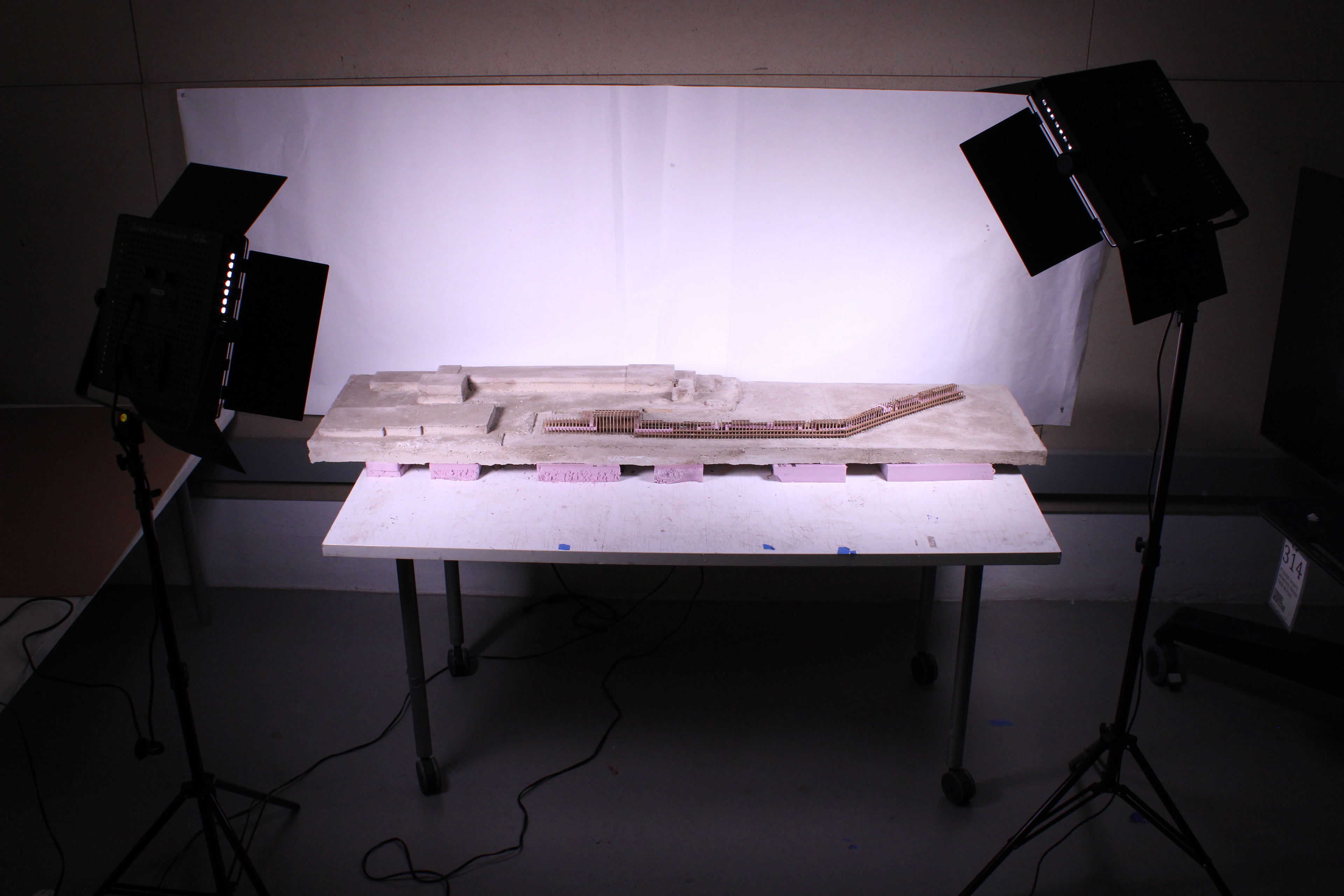
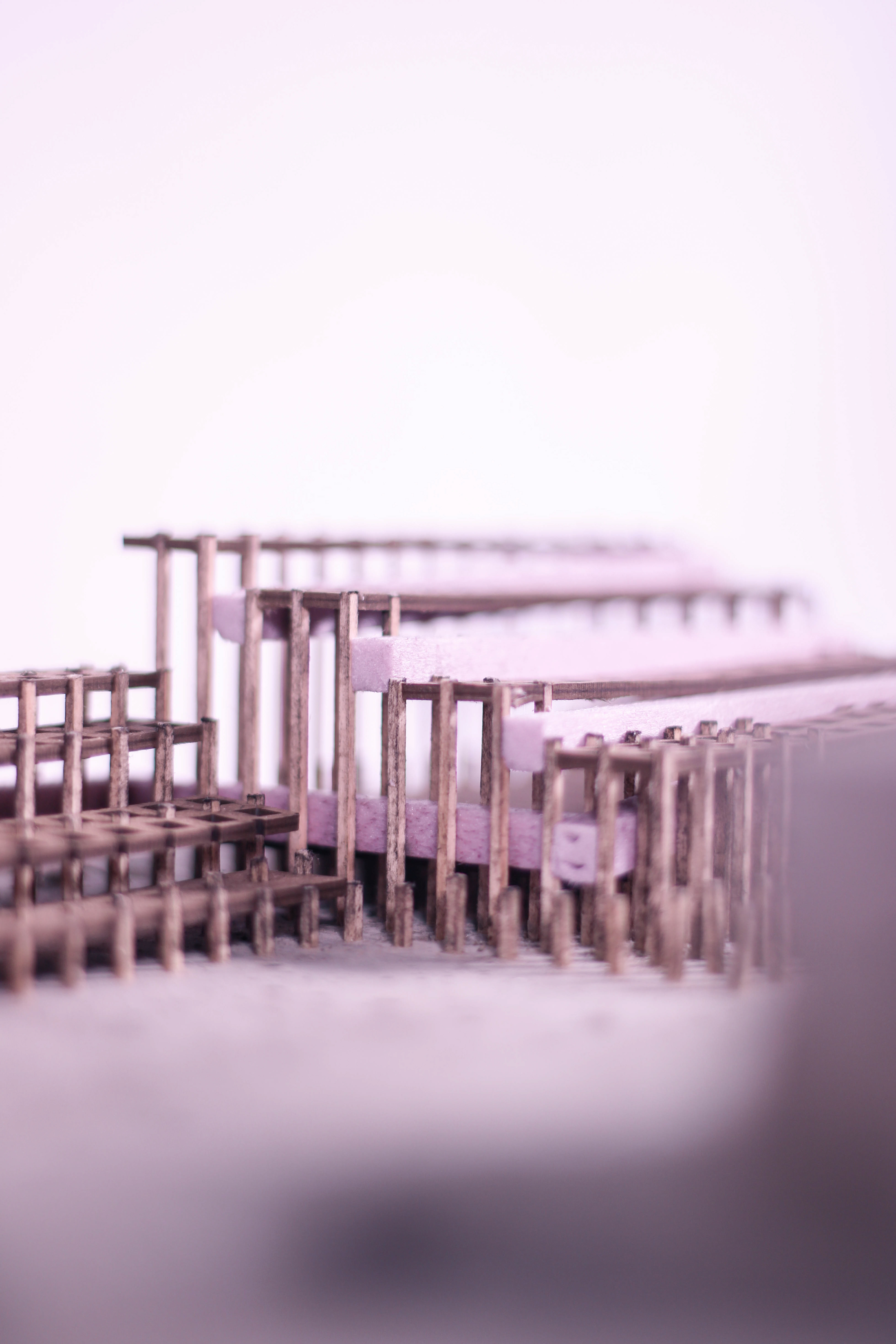
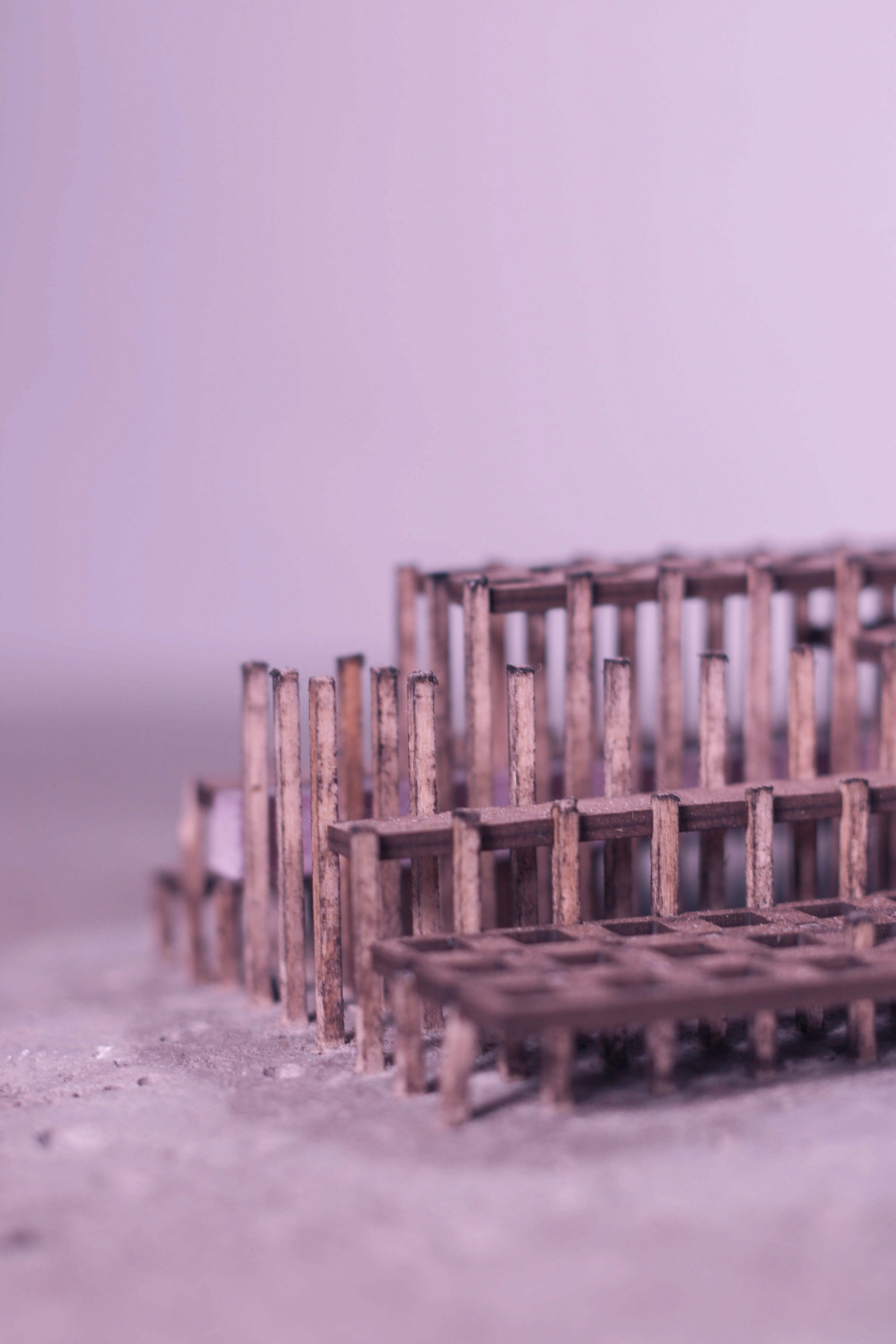
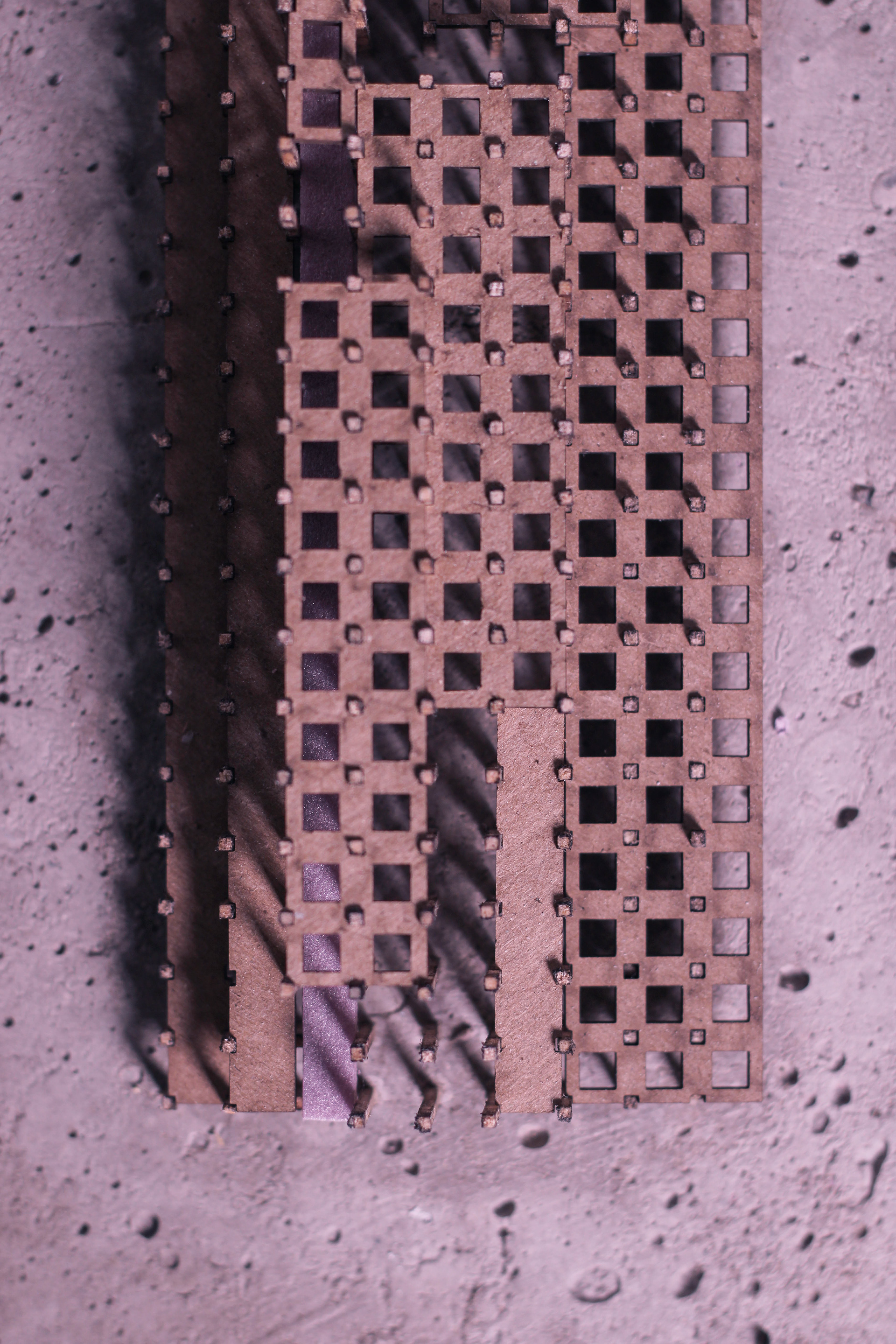
Modeling is an instrumental part of the design process. Throughout this project, modeling was used as a research and iteration device, allowing the exploration of new and interesting spatial ideas. The dialectic between light and heavy was a pivotal part of this exploration. Materials like concrete and basswood were pushed to their model-making limits, including a 200-pound concrete model to test the massing of the project and multiple 1-gram foam models to test tectonic designs of column bases.
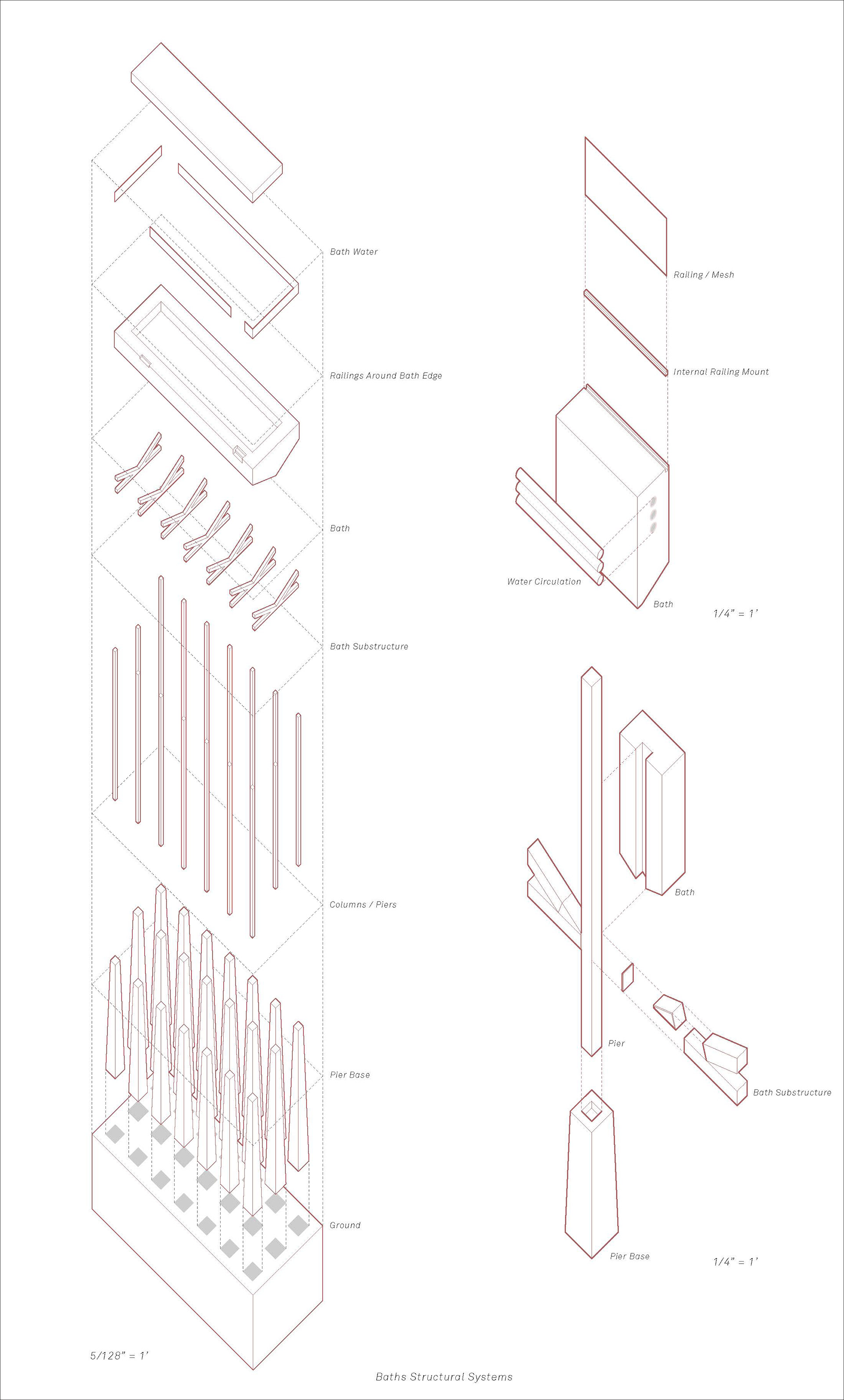
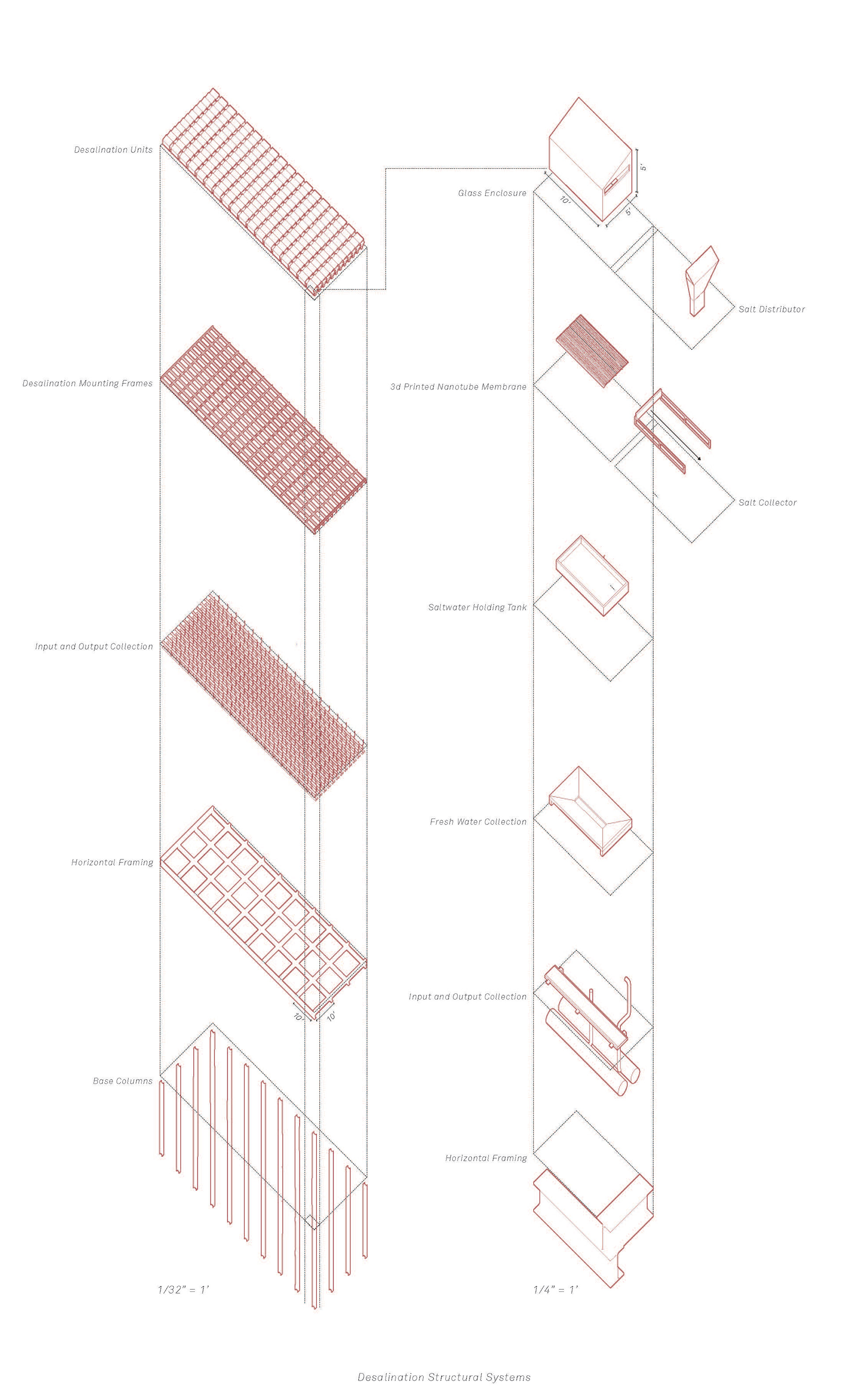
Tectonics and structures formed the crux of this design project. The sheer number of desalination units required to produce the salt necessitated an expansive structural system forming the enclosure of the bath complex. Desalination units are situated in a metal-framed grid under which run water intakes and outtakes along with conveyor belts move the freshly desalinated salt. These layers are evident at the human scale, providing a dynamic and interesting enclosure system, while also perpetuating to smaller scales, resulting in a system designed from the micrometer to the meter.
the project:
